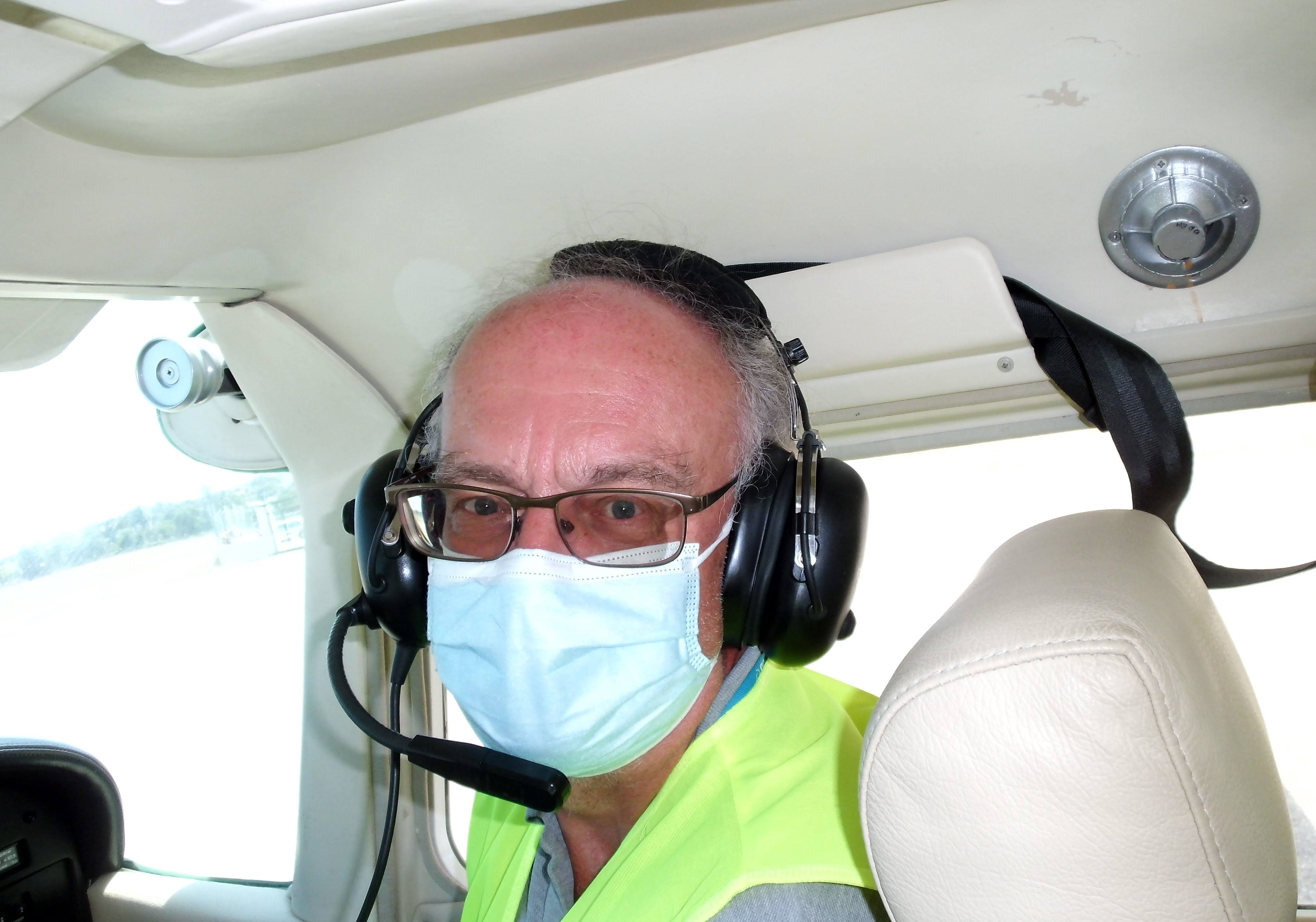|
The Aviators |
| Flt-Lt John R Addams | ||
|
|
|
|
| Flt-Lt James Bernard Allen | ||
|
|
b. 1898 Gloucestershire Regiment from 1914-1916 and then 23 Sqn, R.F.C; transferred to unemployed list, Oct 1920, and to "Boys' Wing, Cranwell" in May 1925. Chief instructor and aerodrome manager at the Liverpool Aero Club from 1928-1930, and a member of the Guild of Air Pilots and Navigators. From 1930, private pilot to the Duchess of Bedford; killed, aged 35, on 5 Dec 1933 when he narrowly avoided HT cables, lost control and crashed her new GAL Monospar ST.4 G-ACKT near Thrupps Farm, Lidlington, Beds. It was his first accident. |
|
| F/O Hugh Thornley Andrews | ||
|
|
||
|
b 28 Jul 1907, Swansea, Glamorgan RAF 1925-1930 He entered for the 1929 King's Cup Race, but withdrew before the start Chief Test Pilot for Spartan Aircraft Co Ltd, Woolston, Southampton, 1 Feb 1930 to 8 Sep 1931 He made two entries for the 1930 King's Cup Race, in Bluebird G-AATS and Spartan G-AAGO, and eventually flew in the latter but was unplaced. He then entered Spartan Arrow, G-AAWZ in the Europa Rundflug 3-week Air Race, 16 Jul-8 Aug 1930 Test Pilot for Fairey Aviation Co, Hamble, Nov 1931 to Dec 1933 RAF in WWII, then Sales Manager for Cunliffe-Owen Aircraft Ltd, 1946-52
Research: thanks to Steve Brew |
||
|
F/O (later Flt-Lt) (Sir) Richard Llewellyn Roger Atcherley KBE, CB, AFC
|
||
|
Batchy', twin brother of David, b. 12 Jan 1904 1929 Schneider pilot and later Air Marshall in the RAF and Chief of Air Staff for the Pakistan Air Force. Put on a bit of weight later on, and ended up as Sales Director for Folland Aircraft. Died 18 Apr 1970. |
|
Capt Harold Harrington Balfour PC MC
|
||
| b. 1 Nov 1897
Lord Balfour of Inchrye, Conservative M.P. for the Isle of Thanet in Kent. He used his DH Moth for electioneering in 1929, and was returned unopposed (i.e. nobody bothered to stand against him) with a majority of over 21,000 in 1931. In 1933 he published his autobiography, called 'An Airman Marches', in which he admitted that he had never paid some fines for driving offences in 1916 whe he was a trainee in the RFC; sure enough, Sussex Magistrates Court sent him a bill for the £3, plus 10 shillings costs, when they read the book. He sent them a cheque for £5. He (and Mrs Balfour, coincidentally) was back in a nursing home in 1934, this time for appendicitis. He became Parliamentary Under-Secretary for Air in 1938, helping to set up the Civil Air Guard, and flew a Spitfire in August 1938, saying that it was a 'very nice aeroplane for an old gentleman like me'. Once WWII broke out, he was a member of the Air Council, responsible for the Canadian part of the Empire Training Scheme, and flew a Whirlwind when he was 43 (although not in combat). After WWII, he was appointed 'Minister Resident in West Africa' by Churchill, but went to the House of Lords when that government was defeated. He was there until his death in 1988. |
|
Capt Charles Douglas Barnard
|
||
|
Personal pilot to the Duchess of Bedford, 'ribald and golden-haired'. b. 8 Dec 1895 in London; his father, Charles Gilbert Barnard, was a master printer (and not related to Franklyn Barnard's father). He learnt to fly in 1915 with the RFC. After WWI, became a test pilot for Sopwith, then a pilot with the de Havilland Airplane Hire Service after meeting Alan Cobham, then their chief pilot, in Spain. In July 1920, he was convicted of manslaughter, for killing an elderly man in a car accident in which he failed to stop, and didn't report; "Charles Barnard (24), a demobilised airman from Watford whose machine was brought down in flames in France, was charged with the manslaughter of Alfred Sharp on the night of May 2, by knocking him down whilst driving a motor-car. A button, answering the description of other buttons from the deceased's coat, was found between the bonnet and mudguard of the accused's car. He was remanded, bail being refused." It also turned out that his driving licence had lapsed at the time, and he hadn't renewed it until some days after the accident. He was given 4 months imprisonment in the 'Second Division' (such prisoners were kept apart from other classes of prisoners, received more frequent letters and visits and wore clothes of a different colour). The Judge said there was "too much reckless driving by people who served in the war. Their war services were no consolation to bereaved relatives." Settling down a bit after that, he was the pilot in 1923 when an aeroplane belonging to the de Havilland Hire Service was used to ferry Commander Bristow to have a look at an Italian ship, the D'Aosta, which had become stranded in Malta. It was the first time the flight had been made, and it took over 14 hours, mainly (Charles complained) because the authorities in Pisa insisted on a deposit of 15% of the value of the machine. One of his other jobs for the de Havilland Hire Company was to fly G-EBGT 'Nulli Secundus', a perfectly good D.H.9c, while a certain Captain Spencer jumped out of it - see the video here.
His first long-distance flight with the Duchess of Bedford was a tour in 1927 from her home in Woburn Abbey to France, Spain and North Africa, covering 4,500 miles in 3 weeks. Two years later, he piloted her Fokker monoplane, the 'Spider' to India and back, 10,000 miles in 88.5 hours; the RAeC gave him their Gold Medal for the year. It wasn't their first attempt at the flight to India and back - a year before they had tried the same thing, but problems with the propellor meant that the Duchess had had to come back by steamer from Karachi (which at the time was in India, of course). In 1928, described as a 'flying man', he was cited as the co-respondent in a divorce case. At the time, he and Mrs Melita Erna May were living together at his place in Monmouth Rd, Bayswater; they got married in December. |
| Flt-Lt John Francis Tuffnell Barrett | ||
|
photo: 1930, aged 32 |
From Surrey. DSO and bar, DFC. Died in WWII: 3rd September 1941, when a Group Captain, RAF buried in Berlin's WWII Cemetery
|
|
|
Capt James Leonard Neville Bennett-Baggs
|
||
|
Chief Consultant pilot for Armstrong Whitworth, the 'burly' Bennett-Baggs |
|
Capt Norman William George Blackburn (RAeC photo missing) |
|
|
b. 25 May 1895 in Leeds. brother of Robert (founder of Blackburn Aircraft), from 1944 in charge of all Blackburn factories in Yorkshire. However, they fell out spectacularly in 1950: Norman and fellow director H V Gort had their appointments terminated by the rest of the Board; they then called an extraordinary meeting to sack the rest of the Board, and Robert sent out a circular to shareholders asking them to vote against them. Which they duly did, by 2 to 1, and Norman and Mr Gort were sent packing. Robert died in 1955, Norman in Mar 1966. |
|
Capt Hubert Stanford Broad MBE AFC
|
||
|
b. 18 (or 20) May 1897 shot through the neck in WWI by one of Richtofen's Red Circus pilots; [c.f. Angus Irwin]; second in Schneider 1925, to Jimmy Doolittle. In 1928, he spent possibly the most boring 24 hours of his life by beating 'all existing figures' for long endurance flights in light aeroplanes (unfortunately there was no official 'record' to beat as such, the FAI not recognising such things). His log makes, um, rivetting reading: --0--0--0--0--0--0--0--0--0--0-- 5:30pm: Hendon 7:40pm: Gloucester 8:30pm: Coffee and sandwiches 11pm: Over Central London, 3,000ft; watched theatre crowds leaving Midnight to dawn: Remained over Edgeware 2:30am: second meal 4:10am: First signs of dawn 5:10am: Biggin Hill. Saw night bomber in air ... Noon: Stamford. Very sleepy 4:30pm: Ipswich --0--0--0--0--0--0--0--0--0--0-- Having trimmed the controls, Hubert settled down and read 3 complete novels 'to relieve the boredom'. When he finally landed, he he said that he was very stiff with cramp, and promptly went home to sleep. His Moth still had 12 gallons of fuel, so it could have kept going for another 4 1/2 hours... He was named as co-respondent in Beryl Markham's divorce in 1939. de Havillands test pilot until 1935 (Bob Waight succeeded him) - broke the world's speed and height records for light aircraft in the original monoplane Tiger Moth, then joined RAE Farnborough; Hawker test pilot post-WWII; died 1975 FLIGHT MARCH 28TH, 1946 No. 2. CAPT. H. S. BROAD, Senior Production Test Pilot, Hawker Aircraft Co. FOR sheer wealth of flying experience it is doubtful whether there is another pilot in the world to equal Hubert Broad. He has flown everything from diminutive single-seaters to multi-engined--bombers, and including a number of out-and-out racing aircraft. His logbooks, of which he has filled some nine or ten, total over7,500 hours' flying time and 182 separate types. These are honest types—not modifications or different mark numbers of the same aircraft. Many of these he has also flown as seaplanes. Broad, at the age of nineteen, learnt to fly at the Hall School of Flying at Hendon in 1915. The aircraft on which he made his first flight (there was no dual, a pupil did straights across the airfield until he felt it was safe to do a circuit)was the single-seater Caudron with35 h.p. Y-type Anzani engine. Believe it or not, with this tiny horsepower the Caudron occasionally was made to stagger into the air with two people on board, but the passenger had to sit on the wing by the side of the nacelle. Early Days The end of 1915 found Broad in the R.N.A.S. at Eastchurch, and he was on the very first course at Cranwell, which was then a R.N.A.S. establishment rejoicing in the name of H.M.S. Daedalus. His first tour of duty at the front was with No. 3 Squadron at Dunkirk. He was among a number of pilots lent by the R.N.A.S. to the R.F.C. No. 3 Squadron flew Sopwith Pups, and it was while he was on one of these, escorting a bombing raid by 90 h.p. R.A.F.-engined B.E.s, that he was shot through the neck by one of Richtofen's later Goering's—Red Circus pilots. On recovery he spent a while as an instructor at Chingford and then went for his second tour of operations with No. 46 Squadron, who flew Sopwith Camels. The end of the 1914-18 war found Broad instructing at the Fighter Pilots' Flying School at Fairlop. Peace found him, as it found so many other young fellows ,with the ability to fly aircraft superbly and no other means of making a living. But a good living could be made by joy-riding in the early 1920's. First he joined the Avro Company, who were running joy-riding in a fairly big way, and in 1920 went to the Adiron Lakes in America with two Avro 504 seaplanes. These two aircraft saw their last days in Long Island, where they were completely wrecked by an autumn gale. By the next year he was back in England competing in the Aerial Derby air race round London on a Sopwith Camel. He finished 6th.In October, 1921, Broad joined de Havillands. Those who know this great concern now will smile to learn that when it started in those days it consisted entirely of two fabric hangars and a hut at Stag Lane. If memory serves, the capital of the company at that time was £100. The D.H. series numbers, which started in the Aircraft Manufacturing Co. Ltd., were carried on in this new firm, and Broad flew every one of the D.H. designs from the D.H.27 to the D.H.90. In the same period he did a lot of test flyingfor other aircraft constructors. He did the W.10, Handcross, Hendon, and some others for Handley Pages, the Parnall Pipit and the Saunders A. 10 fighter. On the Gloster Grebe he ran into wing flutter for the first time (this trouble, in those days, was on a par with the compressibility troubles we have now). Seaplane testing Another big job he did was most of the development work on the Gloster II and III racing seaplanes. Over a period I used to go with him to Felixstowe regularly. As a Press man I was forbidden the precincts of the R.A.F. seaplane station, but there was a perfectly good Great Eastern Railway pier alongside the station. I used to climb over the fence and watch the proceedings from the pier head. Broad nearly lost his life there one day in October,1924. As he was landing the Gloster II a forward strut to the floats collapsed, and the aircraft turned completely over. Mrs. Broad was watching from the shore, and it seemed a very long time before Hubert appeared on the surface. In 1925 Hubert Broad flew the Gloster III racing seaplane in the Schneider Trophy contest which was held that year over Chesapeake Bay in America. This was the race in which Henri Biard, flying the SupermarineS.4—the true forerunner of the Spitfire—crashed in the water with wing flutter. Broad finished this race second to Jimmy (now General) Doolittle. That must have been a vintage generation, because many names from that period have found their way into the high-spots of this last war. With the advent of the D.H. Moth in all its variants, Broad was to be seen performing aerobatics at most flying club meetings and entering many of the races. These included the King's Cup Race, which he won in 1926. He was flying a delightful Cirrus I Moth, which was a study in ivory and red. His average speed over the whole732 miles was 90.4 m.p.h. His piece de resistance in aerobatics was a perfectly formed big loop, the base of which was only some 150ft from the ground. It was a joy to behold, but very dangerous to perform. Broad had sufficient sense to realise this and sufficient courage to stop doing it. "Hooked" It was during an aerobatic show that Hubert had his closest shave in a life packed with incident. And it was so simple. Flying a D.H. Tiger Moth with no one in the front seat, he did a slow roll—a stunt at which he was a master. The safety belt in the empty cockpit was loosely done up. While the Moth was inverted the belt hung down and, as the aircraft turned the right way up again, the belt came back over the joy-stick. The result was that Broad had only about 1 1/2 inches of stick movement; but, nothing daunted, he made a sort of tail-up, seaplane landing. In this connection it is to be remembered that there were no lovely 2,000-yard runways on which to this sort of thing. In those days there was not a single runway available in Britain; not even for the take-off of over-loaded aircraft for long-distance records! Another unhappy moment occurred when he found the tail trim (the incidence of the whole tailplane was adjustable)of a D.H.34 had been connected in reverse. By a good deal of jockeying he managed to get into Northolt. On yet another occasion a careless mechanic left a screwdriver jammed in the chain and sprocket of the rudder actuating gear. This necessitated a down-wind, crosswind, finishing up into-wind landing at Hendon airfield, because that was a bit bigger than Stag Lane. One of the prettiest little aircraft he ever flew was the original D.H. Tiger Moth monoplane. This was tailored exactly to fit Broad. Physically he is not of big stature and few other pilots could get into the machine. In the front of the cockpit was a bulkhead which had two holes just large, enough for the feet to be threaded through, and these holes had to be padded with sorbo rubber so that Broad's shins did not get barked while landing and taxying. Springing was almost non-existent. Span was22ft 6in and length only 18ft 7m. In August, 1927, on this machine he broke the world's record for light aircraft for both speed and height. For the former the figure was 186.47 m.p.h., he having taken19 min 59 sec to cover the 10 km, and for altitude he reached 20,000ft in just 17 min. A year later he took two more world's records on the D.H. Hound. In 1935, after 20 wonderful years of service, he left de Havillands and later did some flying for the Air Registration Board. From here he went to the Royal Aircraft Establishment and finally joined Hawkers to be in charge of all their production testing at Langley. He will be 50 in a matter of a few weeks, yet every day sees him at oxygen height testing Tempest IIs. As he says, he has gone from 35 h.p. in the Anzani to over 3,000 h.p. in the Centaurus and Sabre VI, and from 2 ½ lb/sq ft in the Caudron to 40 lb/sq ft in the Tempest II. |
|
Miss Winifred Sawley Brown Royal Aero Club Certificate No. 8091 (6 Apr 1927)
|
||||||||
|
b. 26 November 1899 in Brooklands, Cheshire; her father was director of a firm of butchers.
She said she learnt to roll her own cigarettes at the age of five; expelled from school at age fourteen (for writing 'the headmistress can go to hell' on the toilet wall), she made her first flight in 1919 from Blackpool sands.
First woman to win the King’s Cup (in 1930); well known in Lancashire as a hockey player who kept goal for the county and toured Australia with an English team; also a pretty good golfer, sailor and tennis player. To see her being thoroughly embarrassed by her reception back at the Lancs Aero Club after winning the King's Cup, and to hear her say “Thank you for this welcome, it’s awfully good of you and I’m awfully happy to be back again in Lancashire, at the aerodrome where Captain Brown taught me to fly…. I’m delighted to have won the race and, well, thank you all very very much, I can’t say any more”, see here
Her son, Tony, b. 11 December 1940 in Angelsey, is "loved and remembered by millions as slippery Adam Chance in Crossroads". She owned: the 1928 Avro 594 Avian III, G-EBVZ - which her father bought for £500 - in which she won the King's Cup in 1930, then a 1930 Avro 616 Sports Avian, G-ABED. 'Win' died in July 1984 in Hove, Sussex. And you can now get a proper biography, entitled "WINIFRED BROWN: Britain's Adventure Girl No. 1", written by King's Lynn's most famous living author, Geoff Meggitt. See www.pitchpole.co.uk for details!
|
||||||||
|
Flt-Lt T B Bruce
photo: 1930 |
| Mr James Brian Buckley DSC |
b. 1905. Royal Navy Service Pilot, attached to HMS Courageous in 1930. Killed in WWII: 21st March 1943, when Lieut-Commander, RN on HMS Glorious; buried at Lee-on-Solent. |
| Mr Alan Samuel Butler J.P. | |
|
photo: 1921, aged 23 |
Chairman of de Havilland; the story goes that in 1921 he asked the one-year old de Havilland Aircraft Company to build a fast two-passenger touring aeroplane to his specification, and stumped up £3,000 for them to do it. The money saved the company from extinction and they appointed him to the board of directors forthwith. He held the position until he retired in 1950. The aeroplane became the DH37, (which he named, firstly, 'Sylvia' after his sister, then, rather diplomatically, 'Lois', after his wife, q.v.), which he entered in the very first King's Cup Race in 1922 and again in 1924, coming third. He and Lois set up a world speed record of 120mph for 1000 km in 1928, and they also flew to Cape Town together . Entered the MacRobertson Race in 1934 (assigned No 59) but didn't take part. Was still aviating in 1970. |
|
Mrs Lois Butler Royal Aero Club Certificate 8634 (14 Jun 1929)
|
|
Née Reid b. 3 Nov 1897 in Montreal, Canada; the "beautiful" [so said Harald Penrose] wife of Alan Butler. (later, the 'Flying Grandmother', oh well...) Her first husband having died in 1923, she married Alan Butler in 1925; together they had a daughter and a son. 15th in the Women’s Combined Alpine Skiing at the 1936 Winter Olympics, skating for her native Canada (although she was a member of the British Team before that).
Post-WWII, the Butlers moved to Rhodesia and bought a tobacco farm, but eventually moved back to Studham Hall, Bedfordshire. She owned a 1930 DH.80A Puss Moth G-ABGX, which was sold in France in December 1934, re-registered as F-AMRX and whose registration was finally cancelled in 1936.
d. 17 Aug 1970 in Piraeus, Attiki, Greece from a heart attack while on holiday, and is buried in Studham. |
|
Mr John Conway Cantrill
|
||
|
'Jack', b. 28 May 1898 in Manchester. Manchester University OTC then RFC (Admin Dept) during WWI, later test pilot for Avro. Volunteer instructor with the Lancashire Aero Club and, from 1930, Manager of Aviation Dept of Cellon [manufacturer of aircraft dope and finishes]. In 1925, "Mr. Cantrill, having no pupils down at the aerodrome, spent the afternoon shooting and returned with two good hares. This shooting is becoming a popular pastime for those who are waiting to fly." Taught Winnie Brown to fly; rejoined the RAF in December 1939, again in the Administrative and Special Duties Branch. In 1944 he resigned his commission as a Wing Commander, and rejoined Cellon. d. 1978 on the Isle of Wight. |
|
Flt-Lt (later Sqn-Ldr) (Sir) David Vaughn Carnegie KBE CB AFC
photo: 1930 |
|
One of the most experienced flying-boat pilots in the country: 3,000 hours by 1931. RNAS during WWI, then flew in and around the Mediterranean and the Far East; spent 18 months as honorary instructor to the Singapore Flying Club. Later an Air Vice Marshall. |
Capt Robert George Cazalet
|
|||||
|
Mr John William Pender Chalmers
photo: 1928, aged 40 |
||
| born in Morro Velho, Brazil |
| Ralph Alexander Cochrane |
|
|
|
b. 1893 later Air Chief Marshall The Hon R Cochrane. In 1930, he was at the RAF Staff College. |
|
Capt (later Sir) Geoffrey de Havilland O.M. K.B.E A.F.C Hon.F.R.Ae.S |
||
| Geoffrey de Havilland - Wikipedia has his story |
|
Mr Geoffrey Raul de Havilland
|
||
|
Geoffrey Junior, aka 'Young D.H.' born in 1910 and learnt to fly at Stag Lane at a tender age. Took over as chief test pilot at de Havillands when Bob Waight was killed. Second Brit to fly a jet-propelled aircraft on its first flight, the Vampire in 1943. Killed when the second DH108 Swallow broke up and crashed in the Thames estuary in 1946. Flight 18th April 1946 As a test pilot young D.H., as he is universally called,has not an exceptionally long history. He took over the chief test pilot's position in October, 1937, when R. J. Waight unfortunately lost his life on the T.K.4. Being, however, the son of his illustrious father, Sir Geoffrey de Havilland, who designed, built and test flew his own aircraft from 1911 onwards, young Geoffrey can be said to have been ''in the industry'' from the very cradle. It is not generally known that Sir Geoffrey took his R.Ae.C. ticket No. 53 in February, 1911, on the second machine of his own design and construction, and that he has made many of the first flights on new D.H. types right up to the Moth Minor in 1938. Geoffrey's first flight is lost in the dim past, but certain it is that at the tender age of six he was flying with father at Hendon in a D.H. 6 (also known as the Clutching Hand). When 18 years of age he left school and came to de Havillands as a premium apprentice for 4 years and learnt to fly on Moths at the firm's reserve training school. After spending two years in the drawing office—much of the time being spent looking out of the windows envying the pilots—he joined the Air Operating Company, who were doing a lot of air survey work in South Africa. This, however, gave him but very little flying, and at the end of six months, he came back to England to become a flying instructor to the D.H. Technical School. The aircraft were wooden Moths built by the students. In 1929 he took his B licence; a very simple business in those days. Some 20 or 30 hours' solo flying, a little cross-country work, a simple "Met" exam, and about one hour's night flying at Croydon was sufficient to qualify. In 1934 Capt. Hubert Broad was chief test pilot of de Havillands, and Bob Waight looked after the production side. There was so much work, however, that Geoffrey was given the opportunity to lend a hand testing Tiger Moths, Dragons, Rapides, Express Air Liners, and Hornet Moths. Broad left the company in 1935 and Waight took over, starting, with the Dragonfly and later the Albatross. It was during the period when the prototype Albatross was going through its development flying that Waight lost his life, and de Havilland took over as chief test pilot. Nobody could have taken on a more interesting or more complex job because the Albatross was completely experimental from tip to tail. Engines were new, construction was new, and the layout was extremely advanced. He had a curious experience on the Albatross. While its strength was ample for all flying loads, some unfortunate drilling had weakened the fuselage under ground loads, and shortly after landing from a test flight the machine broke in halves on the ground. When war broke out lie was busy testing Oxfords and Flamingoes, but when things became desperate at the time of the Battle of Britain, de Havillands did a big job doing emergency repairs to shot-up Hurricanes. Dick Reynell of Hawkers came over and gave Geoffrey the "know how" on Hurricanes. A little later Dick went out on operations with his old squadron (No. 43) and was, unfortunately, shot down.' He was an excellent test pilot and a gallant gentleman. Improvised Runway Geoffrey flew the first Mosquito at Hatfield on November 21st, 1940, but he is more proud of the first flight of the prototype Mosquito fighter. This was built at a dispersal factory with no airfield. To save some six week's wasted time in transport and re-erection at Hatfield, Geoffrey used local fields by having bridges built over ditches to give him a 450yd run for take-off, and then flew the fighter to Hatfield. He is, of course, one of the only two men in Britain to have made first flights on jet-propelled aircraft. The Vampire was flown for the first time on September 21st, 1943, but Geoffrey had already flown the Gloster E.28 at Farnborough. The first airing of the Vampire proved it to be a tribute to the D.H. design and aerodynamics staff, as it behaved almost exactly as they had forecast. There was, however, somewhat of an aileron overbalance which limited the speed to 250 m.p.h. and a rather severe tip stall. Geoffrey de Havilland had made a number of investigation flights on Mosquitoes for compressibility effects, but on the Vampire he has done extensive work. The Vampire, under the effects of compressibility, executes a series of sudden high-speed stalls: the path of the machine is similar to an artist's conception of a streak of lightning, and unless the pilot is strapped-in tightly he is likely to be knocked out by hitting the cockpit roof. Geoffrey, with another pilot, has flown the Vampire in tight formation at over 500 m.p.h., and to investigate snaking, which is causing considerable trouble on most jet aircraft, he has flown the Vampire with rudder locked. Like most of the test pilots, he is living on borrowed time, they having at some stage of their careers had close shaves. Strangely enough, Geoffrey's nearest go was on about the mildest type he ever flew. It was the first production Moth Minor. The prototype had completed its spinning tests, and the same tests on the production model appeared to be only a matter of form. He was flying with John Cunningham (now Group Capt., D.S.O.,D.F.C., and test pilot for the D.H. engine division) at the time. The Minor was put into a spin at 5-6,oooft, but after it had failed to come out in five turns and the engine had stopped, a panic decision was made to abandon ship. Test-flying a Hurricane, too, almost saw him off. This particular aircraft had had a gruelling time in the Battle of Britain, and the whole canopy came off at 4,000ft.hitting him in the face as it blew backwards. At first blind through the amount of blood in his eyes, he flew more by instinct than anything else until he found he could get a little relief by holding his face close to the instrument board. The blood dispersed a little and he was able to land through what appeared to be a thick yellow haze. He wears the scars across his nose to this day, and there was a terrible moment during that flight when he thought he was really blind. On another occasion the oxygen bottle contained only compressed air, and the effects from this were at first blamed on the previous night's party. At the other end of the scale was the test of the T.K.5, a tail-first aircraft built by the technical school. Impecunious at the time, Geoffrey had already mortgaged the bonus for the first flight. Imagine his consternation then when, after roaring the whole length of Hatfield airfield, the machine showed no sign of lifting. The forward elevator was ineffective. The T.K.5 never did fly and was finally abandoned. In the days of peace before the war Geoffrey de Havilland was to be seen at all the air meetings and twice finished 4th in the King's Cup Race flying the TK1 and TK2. |
| Sqn-Ldr David Sigismund Don | ||
|
photo: 1914, when a midshipman in the Royal Navy, aged 18 |
photo: 1930, aged 34 |
|
| Capt Rod Douglas | ||
|
|
||
|
A Director of de Havilland South Africa, and one of the founders of the Johannesburg Light Aeroplane Club.
In 1932, with Geoffrey de Havilland Flight, May 2, 1930: "S. African King's Cup Entrant CAPT. DOUGLAS, of the Johannesburg Light Aeroplane Club, who will represent the Aero Club of South Africa in the King's Cup Race, will fly to England in a Junkers five-seater monoplane." HISTORY OF BARAGWANATH AIRFIELD AND JLPC: "In 1926 two WWI pilots, Captains Rod Douglas and Stan Halse, met at a little hotel run by Douglas, which later became famous as a Johannesburg landmark, known as Uncle Charlies, named after big game hunter and entrepreneur, Charles de Jongh, who also ran a filling station at the well-known intersection. |
||
| Flt-Lt G GH du Boulay | ||
|
|
||
| Mr W A Dudley | ||
|
|
||
| Mr George Patrick Fairbairn | ||
|
|
||
|
He made an attempt in 1931 to set a record for the flight to Australia: "AIRMAN’S AMBITION. To Break Flight to Australia Record. The Australian airman Mr. G. P. Fairbairn, who arrived at Lyons aerodrome yesterday evening in his light aeroplane, has had to postpone his departure this morning owing to unfavourable weather. As soon conditions improve, he will take off for Italy. Mr Fairbairn made a short stop at Le Bourget yesterday before going on to Lyons. Mr. G. P. Fairbairn. who is a Cambridge graduate and the nephew of Mr. “Steve” Fairbairn, the famous rowing coach, learned to fly at the University. Last autumn, with a Cambridge friend named Shenstone, he left on a flight to Kenya, which had to be abandoned owing to mishaps in Italy and Egypt. Mr. Fairbairn’s route on this occasion will be via Marseilles, Catania, Tunis, Benghazi, Cairo, Bagdad, Task, Karachi, Calcutta, Rangoon, Victoria Point, Singapore, and Batavia to Port Darwin." - Hartlepool Northern Daily Mail - Friday 20 February
However, it eventually took him nearly two months to get there: "AUSTRALIAN FLIGHT Mr. Fairbairn Reaches Port Darwin PORT DARWIN. . Mr. G. P. Fairbairn. the Australian airman who set out from Hanworth aerodrome, England. February 19 to beat Wing Commander Kingsford-Smith’s record under ten days for a light aeroplane flight between England and Australia, arrived here at. 3.27 this afternoon. The record is held by Mr. C. W, A. Scott, who overtook Mr. Fairbairn and completed the flight in 9 days, 4 hours. 11 minutes." - Portsmouth Evening News - Saturday 18 April 1931 'Flight' obviously lost interest: "G. P. Fairbairn on a Spartan "Arrow" ("Gipsy II”). Left Hanworth February 19. Reached Nice February 20. Flight abandoned." Flight, October 30 1934
m. 1933 Mary Robertson [Murray] 1 daughter b. 1934
d. 26 May 1935 "PLANE NOSE DIVES INTO ROAD - Cambridge Pilot and Wife Killed MELBOURNE, Sunday. G. P. Fairbairn, former Cambridge man, and his wife, formerly Miss Mary Murray, Melbourne, were killed to-day when their ’plane crashed on a road near Essendon Aerodrome. The machine was the same as that in which Mr. Fairbairn flew from England to Australia in 1931 in company with Mr. K. Shenstone[sic]. Mrs. Fairbairn was in the pilot’s seat at the time of the tragedy. Apparently the engine stalled and the ’plane went into a spin, nose diving to the road. A motor-lorry passing at the time was grazed by one of the wings. Mr. Fairbairn was one of the first Cambridge undergraduates to own his own ’plane and was a keen member of the University Squadron. While they were at the University together in 1930, Mr. Fairbairn and Mr. Kenneth Shenstone set out to fly to Kenya and back, but they crashed in landing at Heliopolis on the outward journey, and they abandoned the flight. In the spring of 1931 they [sic] attempted to break Sir Charles Kingsford-Smith’s record of under ten days for a flight from England to Australia. They [sic] completed the journey, but took 57 days, and were overtaken on the way by Mr. C. W. A. Scott, who set up a record of 9 days 3 hours [sic]." - Belfast News-Letter - Monday 27 May 1935
Obviously there are conflicting reports as to whether George was accompanied on his Australia flight by Kenneth Shenstone!
see also Obituary - George Patrick Fairbairn - Obituaries Australia (anu.edu.au)
"THE FAIRBAIRN ESTATE Melbourne, Sept. 23, 1935. Estate valued at more than £91,639 was left by the late George Patrick Fairbairn, grazier, of Wooloomanta station, Lara, who, with his wife, was killed in an aeroplane crash earlier in the year. The late Mr. Fairbairn bequeathed Wooloomanta to the first of his sons who should attain the age of 25 years, but, as he had no son, the station is left to his nephew, George Michael Wheatley. The residue of the estate was left to his wife, but, as she was killed at the same time as her husband, it is now left to Fairbairn's infant daughter, Mary Frances Fairbairn, aged 21 months."
|
||
| Mr Roland John Falk | ||
|
|
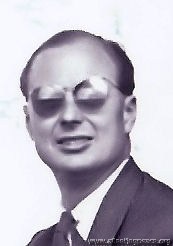 c.1955, aged c.40 c.1955, aged c.40 |
|
|
'Roly', forever remembered for rolling an Avro Vulcan at Farnborough in 1955, presumably wearing his habitual pinstripe suit and tie. "Trained by the London Aeroplane Club at Stag Lane. Started commercial flying with Air Commerce Ltd, now [i.e. 1936] busy flying daily Dawn Express newspaper service from Croydon to Paris. Chews his C.D.C. [whatever that means] Thrives on fog." RAE Farnborough during WWII, including flights on captured German aircraft. Post-war Avro test pilot (especially the Vulcan, of course). OBE in 1955; died 1985 in Jersey [With thanks to John Falk, who is Roly's son, and Bill Thorn's (q.v.) grandson] |
||
| Mr Austin Bruce Ferguson | ||
|
photo: 1927, aged 29 |
||
| A Stockbroker from Surrey | ||
| Flt-Lt (Sir) Edward Hedley Fielden KCVO CB DFC AFC | ||
|
|
||
|
'Mouse', b. 1903. Prince of Wales' (i.e. Edward VII's) pilot, later Captain of the King's (and Queen's) Flights until 1962. DFC, 1943: "This officer has flown on various operational missions, some of a most hazardous nature. He has displayed a high standard of operational efficiency, setting an example which has contributed materially to the high morale of the air crews under his command. His great organising ability has proved a valuable asset.” Edward Fielden (RAF officer) - Wikipedia d. 1976 |
||
| Capt Maxwell Hutcheon 'Max' Findlay | ||
|
photo: 1918, when a Captain in the RAF, aged 20 |
||
|
d. 1st October 1936, in the Schlesinger England-Johannesburg Race; the Airspeed AS.6J Envoy 3 G-AENA 'Gabrielle' struck trees after take-off and crashed at Abercorn, Rhodesia, killing Max Findlay and wireless operator A H Morgan. The unclaimed prize money from the race - £6,000 out of the £10,000 total fund - went to the families of those who had died; £2,000 each to Mrs. Max Findlay and Mrs. A. H. Morgan, and £2,000 placed in trust for the child of Capt. Findlay. |
||
| Lieut-Col Andrew Hamilton Gault D.S.O. | ||
|
|
||
|
An English-born Canadian who served in the Boer War and then founded a regiment - Princess Patricia's Own Canadian Light Infantry - with his own money in 1914. Recruiting was brisk: ten days later the regiment was 1,098 strong. He became its third commanding officer, but was wounded several times and lost his left leg. On May 7th, 1915 they were 635; by the end of the following day they numbered 150. Andrew was one of only two of its officers to survive WWI. In 1920 his fiancée, a Mrs Kathleen Blackader, died when the car he was driving skidded and overturned; she was trapped underneath and he was unable to free her. Her daughter Margaret later became his ward. In 1922 he 'quietly' married Dorothy Blanche Shuckburgh, and they settled at Hatch Court, Taunton. His military record stood him in good stead when he tried for election as an Unionist (i.e. Conservative) M.P., but he narrowly failed to overturn a near-3,000 Liberal majority in 1923. He was back the following year, however, this time successfully, and was Taunton's M.P. until 1935 - serving on various committees and much involved in local politics: President of the 'Society of Somerset Folk', and he regularly gave a cup for the 'best fat beast' in the Taunton Christmas Show. He and Dorothy flew to Germany in 1933 as members of a party making a holiday tour, and met (speaking of fat beasts) Herman Goering and Adolf Hitler. [Lynsdey Everard, A E Borton and Mrs and Mrs Runciman were also on this tour]. d. 28th November 1958 in Montreal, aged 76. |
||
| Flt-Lt Frank George Gibbons | ||
|
|
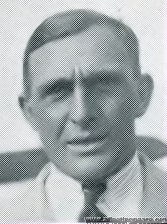 1930, aged 31 1930, aged 31 |
|
|
from Peterborough; WWI air ace (14 victories); killed in May 1932, flying into a tree during the Morning Post (Heston) air race. 1932: "The tragic loss of Fit. Lt. Frank George Gibbons during the race organised by the Morning Post on Saturday, May 21, was one which came as a shock to his many friends. It would appear fairly certain that his death was due to his colliding with a tree while looking at his maps inside the cockpit, and was in no way caused by any defect in the "Spartan" three-seater he was flying at the time. He was a particularly likeable character, besides being an outstanding expert as a pilot. He was one of those people about whom one never heard any gossip, and his likeable character is shown by the fact that although he was the best of companions at the kind of party which usually finishes an air meeting, he was equally at home spending an afternoon playing with young children. He first joined the R.F.C. in June, 1917, as an air mechanic (cadet), and gained his commission in November of the same year. He was gazetted as a Fit. Lt. on June 1, 1926, and won the D.F.C. for services in the field. Not only was he a very fine pilot of land aircraft, but also of flying boats. On January 5, 1931, he went to Calshot, and from there he was posted to No. 204 Flying Boat Squadron at Mountbatten, Plymouth, of which he was a member at the time of his death. He was a brilliant navigator, and this form of race was one in which he was particularly interested. It is perhaps, therefore, some consolation to feel that if he himself could have had the choice, he would have undoubtedly have chosen to die when flying "flat-out" during such a race, in the manner he did. The funeral took place at Ipswich on Wednesday, May 25. He was 33 years of age and unmarried." |
||
| F/O John Woodburn Gillan DFC and bar, AFC | ||
|
|
|
|
|
b c1907. From Edinburgh. Established a world's land plane record in an RAF Hawker Hurricane on February 10, 1938; flying "blind", he covered the 327 miles from Edinburgh to London in 48 minutes, an average speed of 408.75mph. This feat earned him the nickname of 'Downwind Gillan'. AFC in January 1939 as Sqn Ldr. Killed in WWII: 29th August 1941, when a Wing Commander (pilot) RAF; buried Dunkirk. |
||
| Mr Geoffrey Goodwin | ||
|
|
|
|
| RAF Officer | ||
| Mr D S Green | ||
|
|
|
|
| ? | ||
|
Miss Diana Guest Royal Aero Club Certificate 8756 (27 Aug 1929) |
||
|
photo: 1929, aged 20 |
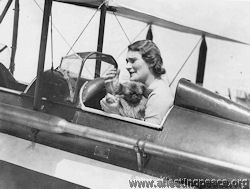 |
|
|
Frederick's daughter; later sculptress Diana Guest Manning. [Mr Manning was one of her 3 husbands]. "I was born and brought up in the country in England. My parents, Amy Phipps and Frederick Guest, met in India and married a year later in London. They settled in a beautiful Queen Anne house near Oakham named Burley on the Hill".
"AN ATALANTA OF THE AIR - MISS DIANA GUEST, CAPTAIN "FREDDIE" GUEST'S PILOT DAUGHTER. Miss Diana Guest, the young daughter of Captain the Hon. Freddie Guest, P.C., C.B.E., D.S.O., etc., Chairman of the National Flying Services, was born in 1909, and recently made her debut in society. She has also just made her debut in the air, and took her pilot's A certificate recently. She and her father had their flying lessons at the same time, and took their respective tickets simultaneously for although Captain Guest, who was born in 1875, has long been interested in flying, and was Secretary of State for Air from 1921-1922, he was not the holder of a pilot's A certificate. " The Sketch, 1929 In 1981 "Miss Guest, who divides her time between Paris and Palm Beach, Fla., and whose works have been exhibited in museums around the world, has donated 27 pieces of her sculpture to Old Westbury Gardens". Diana owned:
d. 1994 |
||
| Capt (later Sqn-Ldr, Air-Comm) the Hon Frederick Edward Guest CBE DSO MP | ||
|
|
|
|
|
b. 14 June 1875 in London. 'Freddie', Winston Churchill's cousin; Diana's (q.v.) father; Liberal then Conservative politician (Secretary of State for Air in 1920-22, despite the fact that, at the time, he knew "very little about aviation, but it is to his credit that he does not pretend to know"). Died 28 April 1937. |
||
| Capt Walter Laurence 'Wally' Hope | ||
|
|
|
|
|
Technical director of Air Freight. b. 9 Nov 1897 in Walton, Liverpool Aged 18, and described as a "trick-cyclist", he was summoned in 1915 for committing a breach of the Realms Act by taking a photograph of one of his Majesty's ships at Barrow; he pleaded not guilty, admitted that he was carrying a camera, and was fined £5. A close friend of Bert Hinkler, he made an extensive search over the Alps at his own expense when Bert went missing on his fatal flight in 1934, but then sued the Daily Mirror when they published their hair-raising account of his exploits, "Captain Hope's Ordeal in the Alps". He said there was "not one word of truth in it." m. 1920 Marjory [Stone] Three-time winner of the King's Cup Race (1927, 1928 and 1932) In the 1926 King's Cup race, "he had to descend at Oxford while racing for home in the last lap with a small “airlock" in his petrol pipe, which effectually put his tiny Moth machine out of the running. He landed in a small field - so small that he found it impossible take off again when his minor trouble had been rectified without pushing his plane through three fields to a broader stretch of country, where he could rise. By this time it was so late that he decided that would abandon the race and go on at his leisure to Hendon. Interviewed at his home in Hendon yesterday, Mr. Hope said: “The only thing that I am really disappointed about is that I feel sure that if this trifling mishap had not occurred I should most certainly have won. For three laps I was racing neck and neck with Captain Broad, with an aggregate speed equal to his - between 90 and 91 m.p.h." Daily Herald At the end of the 1928 race, "Thinking all was over he proceeded to loop and stunt before landing, and having landed switched on his well known winning smile. Suddenly there was a terrific hooting, and Sir Francis McClean in his white Rolls-Royce came tearing across to tell Hope he had not crossed the finishing line... Within 30 seconds Hope was in the air again, discovered the finishing line, landed, and again switched on the winning smile fortissimo." C G Grey Entered for the MacRobertson Race in 1934 (No 24) but didn't take part in the end. m. 1954 Hilda L [Stone or Hunt] d. Oct 1979 - Isle of Wight |
||
| Mr Edmund Gwynn Hordern | ||
|
1935 |
|
|
|
Test pilot for Heston Aircraft Company. In 1937 he formed Hordern-Richmond Aircraft Ltd at Denham, which made propellors; now part of Permali Gloucester Limited. d. 1993 |
||
| Mr Richard Ince | ||
|
|
|
|
|
'A Member of the London Stock Exchange' Killed in WWII: 10th August 1941, when Acting Lieutenant, HMS Daedalus RNVR; buried West Norwood Cemetery |
||
| Mr John Duckworth Irving | ||
|
|
|
|
|
Born in Xlanga, S Africa but living in Northumberland; 'a shopkeeper' |
||
| Mr Alfred Charles Morris Jackaman | ||
|
|
|
|
|
A civil engineer from Slough; in 1936 he and Marcel Desoutter decided that an airport at Gatwick might be a nice idea (it was, after all, "outside the London fog area"). He later married Australian-born Muriel Nora 'Cherry' Davies and they ended up near Sydney; he died in 1980, but she survived until 2011 - aged 101. see |
||
| Lieut Caspar John, RN | ||
|
|
|
|
| Son of Augustus (the artist and well-known pacifist); mother died when he was 3; later became Admiral of the entire Fleet, which must have gone down well with his dad.
d. 1984. |
||
| Lieut-Comm George Pearson Glen Kidston, RN | ||
|
|
|
|
|
Known as Glen. Survived being torpedoed in WWI on the cruiser 'Hague', had several narrow escapes when motor racing, and in November 1929, he was the only survivor when Junkers tri-motor D-903 crashed near Caterham and caught fire. He "escaped through a hole in the side of the aeroplane almost immediately after it struck the ground, and Prince Eugen [zu Schaumburg-Lippe] fought his way out a little later; but by the time would-be rescuers had arrived there was no hope of saving the others." The Prince died the following day. Glen spent the winter abroad, then in May 1930, his widowed mother having died, put his house up for sale; Nyn Park, Northaw, near Potters Bar, "nearly a square mile with a small mansion". And a lake. And a 9-hole golf course. Oh, and 25 cottages. A few smallholdings.... In April 1931 he and Owen Cathcart Jones broke the England to Capetown record, but shortly afterwards (5 May) he was killed in the Drakensburg Mountains, Natal; the aircraft he had borrowed, while his Vega was being overhauled, broke up in mid-air during a storm. Nyn Park was sold, and the estate broken up. The small (23-bedroom) mansion was bought after WWII by the Alexandra Hospital for Children but never used, and burned down in 1963. |
||
| P/O (later F/O, Flt Lt) Haliburton Hume Leech | ||||
|
photo: 1926, aged 18 |
|
|||
|
Haliburton H Leech was born 16 Apr 1908, in Wylam-on-Tyne, Northumberland. He competed in 6 King’s Cup races – every year from 1929 to 1934. His father, Dr. (later Sir) Joseph William Leech, J. P., was the Sheriff of Newcastle-upon-Tyne, and later its M.P.; at the time they lived in Wylam Hall, which according to English Heritage is a vast “rambling house built in the 15th century with 18th-19th century alterations, since divided into 3 apartments”. Haliburton was the youngest of 3 sons. He went to Harrow from 1922 to 1925, then gained his Royal Aero Club Certificate (No 7993) at Cramlington with the Newcastle-on-Tyne Aero Club, flying a D.H. Moth, on the 10 Apr 1926.
In 1931, Flight described him thus: “… a well-known figure at flying meetings, as his aerobatic demonstrations in the Martlet are always amongst the prettiest to be seen. He entered Cranwell as a cadet in 1925, finally leaving there and being posted to Tangmere in 1927. He was promoted to Flying Officer in July 1929, and in 1930 went to the Royal Aircraft Establishment at Farnborough, and has since been engaged on a great deal of test work, flying a large variety of machines. This year he was selected as one of the members to join the High Speed Flight at Felixstowe preparatory to receiving his training to take part in the forthcoming Schneider Trophy Race, but, much to his disappointment, he was later sent back to Farnborough, as it was found that there were too many pilots in the flight. F/O. Leech has raced on numerous occasions in light aircraft, and is always consistent.” However, during one such aerobatic demonstration, one cynic pointed out that "After all it does not matter if he does crash, as his father is a doctor!” In 1932, he piloted the Royal Aircraft Establishment’s Scarab (a parasol-wing modification of the D.H. 53 Humming Bird) on its first flight.He was posted to the School of Naval Co-operation, Lee-on-the-Solent, on the 1st March 1934, then (as a Flight Lieutentant) to No. 824 (F.S.R.) Squadron, Upavon, on the 8th October 1934.
He was best man at his elder brother Basil's wedding to Grace Luckham in September 1937, then married Miss Ruth Janet Chernocke Elliott (the younger daughter of Mr and Mrs A E Elliott of Little Hill, Bromeswell, Woodbridge) at Eyke Church, Suffolk on 9th October 1937. The happy couple then left by air, from Martlesham, 'for abroad'. He retired from the RAF in September 1938 due to ill-health, and died 5th May 1939, in St Bartholomews Hospital, when he was only 31. Unusually, 'Flight Magazine', who carried innumerable references to his flying displays, carried no news of his death - normally they would have produced a short obituary of someone so well-known in aviation circles. His gravestone (with thanks to the Gravestone Photographic Resource) is in Eyke Church:
His father, Sir Joseph, died a year later. Ruth married a Mr Foster in 1940 and died in 1986 in Ipswich; she was referred to as 'Ruth Janet C Lady Foster'. He competed in loads of air pageants and races throughout the 30s, including: - The Kingston-upon-Hull Air Race, at the Hull Air Pageant which was held to celebrate the opening of the Hull Aero Club clubhouse in April 1930. The 7 entrants were Leech (flying "Miss Perry's D.H. Moth G-AASG" *); Winnie Brown flying her Avian G-EBVZ; Winifred Spooner in her D.H. Moth G-AALK; Ivor Thompson (D.H. Moth G-AACL); Alfred Jackaman (D.H. Moth G-AADX); Robert Cazalet in his Westland Widgeon G-EBRM, and Capt G Thorne in Avro Avian G-AAHJ. Leech finished first but was disqualified for ‘not turning at one of the marks’.
* Miss Violet Perry (seen here), who flew at the Berks Bucks and Oxon Club, is not listed as the owner of G-AASG, though; it apparently belonged to 'Miss M Shillington'. September 25, 1932 saw him coming 3rd in the Yorkshire Trophy Race - "175 and a half miles over two triangular circuits" in the Arrow Active, behind Edgar Percival in a Gull, and Col. Louis Arbon Strange in his Spartan. Later, "F/O. Leech gave one of his thrilling, if not hair-raising, displays on the Arrow Active."
A few weeks later (12 August 1933), he put up the fastest time in the London to Newcastle Race in Richard Shuttleworth's Gypsy-engined Comper Swift G-ABWW, but ended up 5th (of 10) on handicap. He received a cheque for £10 for his effort; the 166.09 mph was "the highest registered speed obtained on any British light aircraft" at the time. In July 1937, he was listed as one of 15 competitors in the Devon Air Race (which also included Alex Henshaw, Connie Leathart, Tommy Rose and Geoffrey de Havilland) but withdrew before the start. In the King’s Cup: 1 - G-EAUM (1929) This aircraft was a real-old-timer, an Avro 534 ‘Baby’, first registered in July 1920. Squadron Leader Harold Payn had raced it in 1922, and R. A. Whitehead (who sold it to Leech) in 1928. Leech, in turn, sold the aircraft to H.R.A. Edwards, and it was finally withdrawn from use in November 1934. 2 - G-AALK (1930) This D.H.60G Gipsy Moth was almost new (first registered August 1929), and belonged to the Household Brigade Flying Club at Hanworth. It was flown by Squadron Leader the Hon. Frederick E Guest in the 1931 race, then went to Wrightson Air Hire, but crashed at Shackend Railway Station near Hawick in April 1937. 3 - G-ABIF (1931) This Southern Martlet 205 had only been registered in January 1931, and belonged to Miss J Forbes-Robinson. Theodore C Sanders flew it in the 1933 King’s Cup race. It was withdrawn from use in 1940, but went to the ATC during WWII, until it was finally cancelled in December 1945. 4 - G-ABVE (1932, 1933) G-ABVE was the only Arrow Active II ever built, registered in March 1932 to Arrow Aircraft Ltd of Yeading, Leeds. Leech flew this aircraft in the 1932 and 1933 races, achieving 137mph. In an extraordinary link with MacRobertson aviator Geoffrey Shaw, they were together in July, 1932: "Six members joined the Yorkshire Aeroplane Club during June, amongst them being Mr. Geoffrey Shaw and Mr. A. C. Thornton. The latter is the designer of the" Arrow Active," and his latest production, the "Active II" has been much in evidence, being tested by F/O.H. H. Leech." After the race, it was stored at Yeading until 1957 before being completely renovated in 1958, with the installation of a 145-hp Gipsy Major engine. It survives, and is now in the Real Aeroplane Collection at Breighton Aerodrome, Selby, Yorks. 5 - G-ACUP (1934) Unfortunately, the registration of this brand-new Percival D.3 ‘Gull Six’ did not prove prophetic; Leech only managed fifth in the heats, despite averaging 160mph. The Gull went on to re-appear in the Kings’ Cup in 1938, flown by H Thomas-Ferrand, and was then sold in Australia in May 1939.
|
||||
| Mr Arthur Gregory George Marshall | ||
|
photo: 1928, aged 25 |
|
|
|
Sir Arthur, the engineer who founded Marshalls of Cambridge; 'Chariots of Fire' Olympic athlete; died 2007 (sad, but then he was 103) |
||
| Capt Ian Simon Joseph Constable Maxwell | ||
|
|
|
|
|
a 'Merchant'. Address c/o the Naval and Military Club, London |
||
| F/O John Francis Xavier McKenna AFC | ||
|
|
|
|
|
b c.1906. From Porton, Wilts. B.Sc. F.R.Ae.S. AFC in January 1939 as Sqn Ldr Killed in WWII: 19th January 1945, when a Group Captain RAF; buried Durrington, Wilts. |
||
| Mr Frederick George Miles | ||
|
|
|
|
|
Brilliant aircraft designer, and... biro manufacturer. Taught to fly by (and formed the Southern Aircraft company with) Cecil Pashley. The story of the Miles Aircraft Company is being put together here: |
||
| Mr A G Mortimer | ||
|
|
|
|
| ?? | ||
| Frederick 'Alan' Irving Muntz | ||
|
|
|
|
|
b. 7 Jun 1899 Co-founded Airwork Ltd with Nigel Norman in 1928; this company was instrumental in opening Heston Aerodrome the following year. Married 3 times; firstly to Mary [Harnett] with whom he had 3 children, then in 1934 to Lady Margaret Frances Anne Vane-Tempest-Stewart (1910–1966), daughter of the 7th Marquess of Londonderry and then, in 1948, Marjorie Mary Helena Strickland. d. 7 Mar 1985 |
||
| Mr Carill Stanley Napier | ||
|
|
|
|
|
b. 29 Apr 1907 From Putney, London Son of the famous engine-maker Montague; an apprentice with Westlands in 1929. 'his one recreation apart from flying is the commendable indoor sport of darts. Believes that air-racing is good fun only when taken not too seriously'' Killed in WWII: 29 April 1941, when a First Officer in the Air Transport Auxiliary; buried RAF Halton, Bucks. see https://www.ata-ferry-pilots.org/index.php/category-blog-1939/53-napier-carill |
||
| Mr Thomas Humphrey Naylor | ||
|
|
|
|
|
Director of Royal Insurance; in 1950 High Sheriff of Cheshire; died 1966 |
||
| Sir Henry Nigel St Valery Norman CBE | ||
|
|
|
|
|
b. c.1898. From Rendcomb, Glos. Always known as Nigel; from 1939, 2nd Baronet of Honeyhanger, later Air Commodore Sir Nigel. Co-founded Airwork Services with Alan Muntz at Heston.
Killed in WWII: 19th May 1943, on a flight from St Mawgan, buried Rendcomb, Glos. |
||
| Flt-Lt John Oliver | ||
|
|
|
|
| ?? | ||
| Sqn-Ldr Augustus Henry Orlebar CBE, AFC and bar | ||
|
photo: 1929 |
|
|
|
b. c.1897. From Podington, Northants. Schneider Trophy pilot (and World Air Speed Record Holder) in 1929, Director of Flying Training in WWII; d. 4th April 1943 from natural causes. |
||
| Mr Ian Robertson Parker | ||
|
|
|
|
|
a Sugar Planter and Merchant from Liverpool; RAF Wing Commander in WWII (Digby Section in 1940); Group Captain AAF from 1946; d. 1959 and is buried on the Isle of Wee Cumbrae, Ayrshire, Scotland |
||
| Capt G A Pennington | ||
|
|
|
|
| ?? | ||
| Capt Edgar Wikner Percival | ||
|
|
|
|
|
Australian aeronautical genius who ended up in the USA and New Zealand, via Luton. b. 23 Feb 1897 in Albury, N.S.W. In 1915, while training in England, he became only the third person on record to recover from a spin (supposedly, Fred Raynham [q.v.] was the first). He later wrote: "After that I found that spinning was great fun and spun a Bristol Scout the next day. Very much later, on the Western Front, I found a spin was a very speedy way of dropping on the enemy - especially through a handy cloud." Designer, and pilot, of some of the finest racing and record-breaking aeroplanes of all time. "He always flies his rakish Mew Gulls in a soft felt hat and tries to look as much unlike an intrepid birdman as possible, though he has never yet deceived the handicappers by this ruse."
Flight said he "has an uncanny navigational sense in thick weather, but sometimes flies pensively past his destination in 100-mile visibility". Michael Madigan wrote: "It was very difficult to resist his puckish humour and not to fall under his spell... In his early flying days he had a fox-terrier called Ginger Mick. This dog always sat in the [open] rear cockpit tethered to a spar. One day as Edgar was preparing to land he went into a loop to lose height, forgetting about his passenger. After levelling off he heard strange scrabbling noises from the back and looking out saw Ginger Mick frantically dog-paddling in the air suspended by his lead. Edgar managed to manoevre Ginger back into the plane, and after landing he thought he would never see Ginger Mick again as he rushed off, but Ginger was as persistent an aviator as his master and reappeared, to settle in his place at start-up, large as life, and eager for more."
© The Royal Aero Club
d. 21 Jan 1984; his ashes were taken by the RAAF "to be scattered in the very field in Richmond, N.S.,W., where it all began." "Edgar Percival had a strong character, a high mental and moral sense, and was a perfectionist - the qualities which made him successful. He was the dominant presence which compelled attention in a group. This dominance arose from his vast knowledge of aviation in all its aspects... all this and his strength of will did not make him an easy associate. He could see problems clearly, had the energy to solve them, and drove himself relentlessly, which made him rather intolerant of those less gifted." (All quotes via Martin Barraclough, for which many thanks) |
||
| Mr Charles Edward Murray Pickthorn | ||
|
|
|
|
|
a 'Dealer' from London; WWI ace (5 victories, one shared with James Robb). Attempted an England-Australia flight in 1930 with F/O. C. J. Chabot on a D.H. "Puss Moth"; left Croydon October 6, but abandoned the flight in Karachi on October 13. died 1938 |
||
| Flt-Lt R P P Pope | ||
|
|
|
|
|
Chief Instructor with Air Service Training |
||
| Mr H A Presto (or Oresto) | ||
|
|
|
|
| Pseudonym ("Hey Presto" ??) | ||
| Wing-Cmdr Harold Melsome Probyn | ||
|
|
|
|
|
from Lancashire, later an Air Commodore; retired to Kenya. Felt that aviation wasn't as much fun after the invention of the parachute. In 1927-8 he entered as 'Harold Brooklyn', and 1929-31 he entered as 'J Wellworth'; I have no idea why. |
||
| Lieut Llewellyn George Richardson, RN | ||
|
photo: 1930 |
|
|
|
Royal Navy 1922-1951, but RAF 1925-36 |
||
| Flt-Lt Thomas 'Tommy' Rose DFC | ||
|
|
|
|
|
b. 27 Jan 1895 - Alton, Hants One of the best-known racing and pioneering pilots of the 30s. His father, John, was a farm bailiff at Basing Farm, Froxfield, nr Petersfield, Hants. After working briefly as a bank clerk, Tommy joined the Royal Navy in 1914 and then transferred to the R.F.C. in June 1917. "He was shot down three times, but escaped each time. He was awarded the DFC for his work with the fighter squadron in which Billy Bishop, VC, served. " m. 1925 Margaret Elizabeth [Ashford], [divorced 1938] Retired from the RAF in 1926 with the rank of Flight-Lieutenant. In December 1931, he made an unsuccessful attempt on the UK-Cape record, and then flew back "by easy stages". From Oct 1933, Manager and Chief Instructor at Sywell. "TOMMY ROSE is gone from Sywell, but not forgotten. As sales manager for Messrs. Phillips and Powis, the Reading aircraft manufacturers, he spends quite a lot of time flying round the country. Last week his photograph was 'splashed' in all the national daily papers, greeting Mr. H. L. Brook, the Yorkshireman airman, on his arrival at Croydon after breaking the Australia-England record previously held by Jim Mollison. There was no mistaking Tommy’s famous sports jacket and boyish grin! Mr. Rose, the way, left a last impression at Sywell. Shortly before leaving, when the new gate was being erected in front of the clubhouse, he carefully placed his foot in the wet cement and printed beside it 'Tom Rose' with a trowel. The cement hardened, and the 'Rose' mark is there for posterity to reverence! Hundreds of feet have since trod the hallowed spot." - Northampton Mercury, 12 April 1935 Competed in the King's Cup six times, winning it in 1935 ...
© The Royal Aero Club [0122-0170] ... and coming second in 1934 and 1936. [The 1935 King's Cup itself recently sold at auction for £3,900:
Photo kindly supplied by Sarah Chambers, reproduced by kind permission of Sworders Fine Art Auctioneers.] He became a national hero in March 1936 after his flight to Cape Town and back; "he can now claim to have made the fastest time for the trip both out and home. His new record is 6 days 6 hr. 57 min. (he got to the Cape in 89 hr. 37 min.), which beats F/O David Llewellyn's time—the previous best—by 5 hr. 6 min."
After the flight to the Cape, he had tea with the Prime Minister, General Hcrtzog, and also saw General Smuts. However, he was charmingly modest about his achievements: "TOMMY ROSE ON LONG FLIGHTS SAYS RECORD ATTEMPTS ARE 'LARGELY BUNKUM' This flight business is bunkum! The authority for that picturesquely phrased piece of information is Flight- Lieutenant Tommy Rose, and he should know, for he hit the headlines in all the national newspapers when he smashed all records for the flight from London to the Cape. In a talk to the Round Table at Stewart's Cafe on Monday he summed up the whole business in these few words: 'All long distance flights are largely bunkum. The national newspapers, if there is no other news at the time, whip up an interest in these flights, and if one gets there safely and breaks a record everyone thinks: 'By gad, here's one of the twelve apostles come to life!’ (Laughter.) 'But I assure you there is nothing in it. The only things you have got do to be successful are to get the best machine you can find and then practise sitting still for a long, long time . . . . ' Reflections wise and witty on flying in general and his own flight in particular made Flight-Lieutenant Rose's talk one of the most delightful and amusing to which Tablers have listened to for a long time. His racy manner produced a laugh at almost every sentence, and a more unassuming world record breaker than this genial young man would be difficult to find. There was one richly humorous story which is worth repeating. 'When I eventually got to the Cape I had to broadcast to the Union,' he said. 'The announcer seemed very nervous and this was what he said: ’Who do you think I have here the studio? None other than Mr Tom Mollison, who flew from London to the Cape in 37 days 18 hours.’ I met General Hertzog few days later and he said: 'if it takes all that time to fly, don't you think you had better come by boat next time?’ Flight-Lieutenant Rose answered a number of questions and urged the need for municipalities laying down landing grounds for aircraft. Members of the Rotary Club and of other Round Tables were present, as guests, to hear the airman’s talk. " - Eastbourne Gazette, 6 May 1936
© The Royal Aero Club [0129-0039] Before the 1936 Schlesinger Race to Johannesburg, he predicted: "It is my opinion that the pilot of the aeroplane which gets there in under forty-eight hours will deserve just about the biggest bunch of bananas ever found. Having got lost myself many times down this route when flying without wireless, I fully expect to do so again, and the pilot in this race who can honestly say at the end that he was sure of his position all the time will either be very lucky, very clever, or have a queer idea of honesty." From 1939 to 1946, Chief Test Pilot for Miles Aircraft, living in Sonning, Berks; in July 1943 he was reported to have "improved considerably and to be well on the way to recovery, after he contracted a chill when captaining his works cricket team. " Won the Manx Air Derby in 1947, still flying a Miles Hawk; three circuits of the island at 181 mph. d. 20 Jun 1968 - Alderney, Channel Islands. |
||
| Flt-Lt Herbert Victor Rowley | ||
|
photo: 1916, when a Flight Sub-Lieut in the Royal Navy, aged 19 |
|
|
|
born in Derbyshire; WWI ace (9 victories) Air Commodore in WWII, in India and Burma |
||
| Hon Walter Leslie Runciman OBE AFC | ||
|
photo: 1928, aged 28 |
|
|
|
2nd Viscount Runciman of Doxford, from Newcastle-upon-Tyne; after Eton and Cambridge, joined his dad's shipping firm, then Imperial Airways. First Director-General of BOAC, Commodore of the Royal Yacht Squadron, OBE, etc, etc; died 1989 His sister, Margaret Fairweather, was killed in WWII serving in the ATA. See https://www.ata-ferry-pilots.org/index.php/category-blog-1940/81-fairweather-margaret-mrs |
||
| F/O Phillip Edward Gerald 'Gerry' Sayer | ||
|
|
|
|
|
The first British pilot to fly a jet fighter, in 1941; killed in 1942 in a flying accident in Northumberland.
|
||
| Mr Derek Shuldham Schreiber | ||
|
|
|
|
|
'From Suffolk. Enjoys polo, hunting, shooting and other sports'. Later a Brigadier: Brigadier Derek Schreiber, Chief of Staff to the Governor General and Viscountess Clive, Lady in Waiting to the Duchess of Gloucester leaving St. John's Church after their wedding, Canberra, 24 October 1945 - Trove d. 1972 and is buried in Marlesford, Suffolk. |
||
| Mr Michael David Llewellyn Scott | ||
|
|
|
|
|
b. 12 Sep 1906 in Eton, Bucks. B.A. Cantab. and an 'Old Uppinghamian'. In 1930, a solicitor from Stoke Poges, if you hadn't already guessed :-), and, for a while, v. famous in the Skegness area... In 1930, after competing in the King's Cup, he crashed near Skegness when the wheels of his D.H.60X Moth G-EBXG caught a wire fence. He jumped clear, but his mechanic (Howard), who was still strapped in, was 'injured about the head'. May 1932, he had a terrifying ordeal (a bit like General and Mrs Lewin in the Sudan swamps, but even worse) in the remote reaches of The Wash; "CRIPPLED 'PLANE ON SANDBANK SET ON FIRE TO ATTRACT ATTENTION - HULL TRADER TO RESCUE" "Captain (sic) M. D. L. Scott, secretary of the Skegness Aero Club, was flying with a passenger named Tingall, from Skegness to Hunstanton, when his 'plane developed engine trouble. They were about halfway across the Wash, and he was compelled to a make forced landing on a sandbank which was uncovered, as it was low tide... they made an effort to swim the five miles to shore, but the current proved too strong. They then tried to attract attention by setting fire to the 'plane. Later the flames were noticed by a small cargo boat named Lizzie and Annie, which came alongside and took Captain Scott and his passenger on board. " Only just in time, too - the tide was rising fast... only the engine of the aeroplane remained unburnt ... Gosh! By 1933, he was offering to take sun-starved midlanders to be braced up a bit in Skegness; 25 bob return from Nottingham or Leicester, 35 shillings from Birmingham: "Nottingham people will be able to fly to Skegness again this summer at fares which will actually be cheaper than the first-class railway rates. This enterprising venture, which was inaugurated last year, is to be resumed again at Easter on a very much bigger scale... The service is to be conducted Mr. M. D. L. Scott, of Eastern Air Services, Skegness". The Eastern Air Transport Company carried 30,000 passengers in the 4 years to 1933 without serious incident. In November 1934, the Western Daily Press reported thus: "FOUND: AN AEROPLANE. A police constable, while on duty in Pinner, Middlesex, yesterday, found a monoplane in a field. No one seemed to know how the monoplane got there, and the constable began to make inquiries. The machine appeared to be a privately owned one, and was in good condition save for some slight damage to the undercarriage. The monoplane bore the marks G-AAPY and inscribed inside the fuselage was the name "M. D. L. Scott, Skegness." Further inquiries by the officer among the farm hands and the owner of the farm, Mr Hall, showed that someone saw an aeroplane land in a field on Wednesday afternoon. From that time until the constable discovered it yesterday it has been completely unattended, and, far as the police know, unclaimed. A Mr L. Scott, an airman, operates a private aerodrome and club at Winthorpe, a mile or so from Skegness. Pinner police were last night in communication with the police at Skegness." [G-AAPY was a Desoutter I, belonging to Michael. It was, indeed, written off in November 1934.) He then turned to golf in the late 30s - winner of the 'Witt Cup' in 1938. Married firstly to Marguerite; their son, Roderick, was born in December 1943. By then, he was a Flt-Lt (RAF Volunteer Reserve) in Oxford. However, by 1948, when he married Miss Patricia Collette Thomas (from Bude, Cornwall) in Zurich, they lived at 400 East 57th St, New York. Describing himself as a 'Sales Manager', he travelled (first class) from Durban to Southampton in February 1959, intending to stay a couple of months with the Duke of Somerset, Maiden Bradley, Wiltshire. Like you do. |
||
| Sqn-Ldr (Sir) Leonard Horatio Slatter KBE CB DSC DFC | ||
|
|
||
|
born in Durban, S Africa; in charge of the High Speed Flight in 1927; later Air Marshall Sir Leonard, C-in-C Coastal Command 1945; died 1961 Full story here: Leonard Slatter - Wikipedia
Here is a contemporary video of his flight to South Africa in 1929, (which includes footage of Adelaide Cleaver and Donald Drew's flight (see Cleaver, Adelaide Franklin) and that of Owen and Muir's accident in their Vickers Vellox on their way to Australia - see England-Australia Flights)
If your connection is too slow to stream it without stuttering, you can download it here (it's 265 Mb): |
||
|
Miss Winifred Evelyn Spooner Royal Aero Club Certificate No. 8137 (11 Aug 1927) |
|
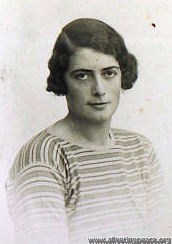 1927, aged 27 1927, aged 27 |
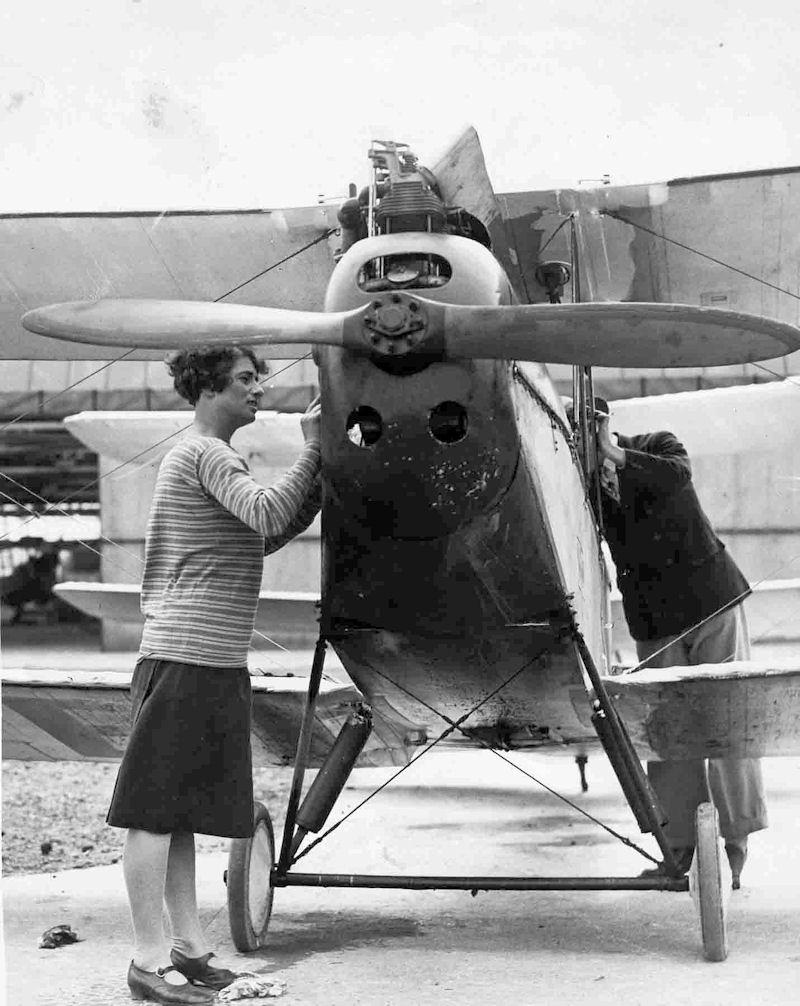 |
|
'Bad luck Wimpey' was one of the best-known women aviators of the time, and the one generally regarded as the best. She was awarded the International League of Aviation's Trophy for women aviators in 1929, and in 1930 Capt C D Barnard described her as 'the finest woman pilot in the world' (He went on to say that Lady Bailey was regarded as the 'second finest airwoman in the world', and we don't know what she thought about that...) Learnt to fly in 1926 and took it 'more seriously than most' - in her first race in April 1928, she won the Suffolk Handicap (21 miles at 78mph), ahead of Neville Stack and four other male rivals; she won the 'heavy' category in the Round Europe Contest for Touring Aircraft in 1930 - covering 4,700 miles at 102mph, ("a very fine performance indeed", said The Times) and also competed in the Ladies event at Reading (May, 1931) - the other competitors were Amy Johnson, Grace Aitken, Pauline Gower, Dorothy Spicer, Susan Slade, Gabrielle Burr, Christina Young, and Fidelia Crossley - a historic gathering indeed. Photo here
She soon took her 'B' (Commercial) Licence, and at one stage was the only professional woman pilot in the country. In September 1927 her first flight abroad was to Venice to support the British Team in the Schneider Cup in Venice. Alan Butler (with Peter Hoare as passenger), and Hubert Broad, who took Maia Carberry, also went and, in case you were wondering, "Mrs. Carberry wore a pale blue leather flying helmet to match the colour of her Moth aeroplane." She soon became regarded as 'one of the few women who matter in the air world'; in March 1928, when King Amanullah of Afghanistan was on a state visit to London, he inspected "the latest types of Imperial Airways passenger machines and a number of small Moth machines in private ownership. He carried on, through an interpreter, an animated conversation with Miss Winifred Brown, of Manchester, and Miss Spooner, of London, both of whom own and fly small two-seater machines." In the 'Woman's World' section of the Inverness Courier of April 1928, this description of Winifred appeared: "[she] has not flown for very long, for it was only about three years ago that I knew her in Cologne, when she then drove, instead of an aeroplane, a two-seater car, through the crowded streets of Cologne, at a speed which most people would have been terrified to attempt. She was always, however, extremely cool and composed, and though her passengers were sometimes nervous she never seemed so. She was always very sporting, and played an excellent game of tennis. A good-looking, typically English girl, she made many friends among the British army in Cologne when doing voluntary work with the Y.M.C.A. there. [Winifred was with the 'Army of Occupation' in Germany at the time]" She did have what she later described as her 'greatest air thrill' on Marlborough Common in May 1929; "she had been taking passengers up all day when, after one flight, she said she was not quite satisfied with the controls, and refused to take the next man until she had attended to the aeroplane. After doing so she started the propeller, and as she walked away from it the machine suddenly moved forward. Pluckily, Miss Spooner jumped and caught hold of the wing, her idea being to clamber into the cockpit and stop the engine. The machine quickly gathered speed, and she was dragged 40 or 50 yards [she later reckoned it was about 30 yards], when to the horror of the crowd the plane turned and buried its nose in the ground, hurling Miss Spooner some distance. She was unconscious. Doctors were sent for and she was taken to hospital. 'We thought she must have been killed,' an eye-witness told our representative." She was taken to Savernake Hospital suffering from a sprained wrist, cuts, and slight concussion. She does seem to have had quite a few run-ins with the local Constabulary; firstly in January 1929 for failing to keep her Alsatian dog under proper control (it had attacked another dog which "had no chance"), then in August 1929 for failing to produce a car driving licence (she said she had forgotten about it and flew to France the following day); then in 1931, she was fined £35 for leaving her motor car unattended and for failing to have lights on it. When she was told that she would be reported, she said: "I am used to it." A police-superintendent said there were no previous convictions recorded against her, as far as Reading was concerned. The Chairman then asked 'And none in the air? She replied 'There are no policemen in the air. That is why I like it.'" I'm certainly sorry I missed her talk, given in April 1928 at Harrods in Brompton Road, on "Flying as a New Delight for Womankind". Later, in the early thirties, she wrote for "Good Housekeeping" on, of course, "Flying for Women", alongside such luminaries as John Galsworthy, Kate O'Brien, and Hugh Walpole.
September 1929 saw her accompanying NFS's chairman Freddie Guest (q.v.) to Nairobi, to inaugurate an air taxi service and give flying lessons. They took 3 aeroplanes with them, and flew them back (via South Africa) in February 1930. She and E C T 'Cecil' Edwards tried to fly a Desoutter to Cape Town and back in December 1930, but this expedition ended up in a forced landing in the sea off southern Italy; Cecil and Winifred had to swim a couple of miles to shore.
She regularly competed in the King's Cup - coming 3rd in 1928 - and was a guest at Amelia Earhart's reception at the Royal Aero Club in May 1932.
She was personal pilot to Leicestershire M.P. Lyndsey Everard from February 1931 - they are seen here with Nigel Norman. And then, suddenly, on 13 January 1933, she was dead - not in an air crash, but as a result of a cold which rapidly worsened into pneumonia. Only few days before, in conversation with a friend, she had mentioned that her mother had died from influenza in 1918. "The deaths of both mother and daughter occurred with the same suddenness." They are buried together in Hinton Parva: see http://www.earlyaviators.com/espoone5.htm
She left £1,357 0s 8d, and her brother, Capt. Frank Vivian Spooner, Indian Army (retd) was appointed administrator. She hadn't got round to writing a will. There is a scholarship in her memory at Sherborne School for Girls. "In the passing of Winifred Spooner the world has lost a great woman... she stood out as a woman of indomitable courage". Winifred owned: a 1926 DH.60 Moth (G-EBOT), a 1928 DH.60G Gipsy Moth (G-AAAL, which she sold to Elise Battye); a 1930 Desoutter IID (G-ABCU - this is the aeroplane she and E.C.T. Edwards ditched in the sea off Naples in December 1930), and later a 1932 Breda 33 (G-ABXK), which was sold in Italy just 3 months before her death. Winifred's brother Tony was chief flying instructor at the Montreal Flying Club in 1931. He was killed in March 1935 in Egypt when piloting a D.H. 84 Dragon, SU-ABI belonging to Misr Airwork, when it was caught up in a sandstorm and both engines failed. |
|
| Capt Thomas Neville Stack | ||
|
|
RAeC [0312-0087] |
|
|
b. 1 April 1896; universally known as 'Stacko' RFC in WWI, then became a familiar figure in aviation circles during the 1920s - in 1926 he and Bernard Leete made the first flight from England to India in two DH. Moths, one of several record-breaking flights. He and J R Chaplin tried to fly to Australia and back in 1931, but had to turn back at Constantinople, Turkey, with carburettor trouble; later in the year the same pair attempted a flight to India and back, but again turned back with mechanical problems. He was appointed 'Air Superintendent' of Iraq Airwork Ltd in 1933, and flew their first machine (a Spartan Cruiser) there via Cairo in 1933. Shortly afterwards, he flew 2 doctors and a nurse out to India, to perform an urgent operation on a Nepalese princess. Late 1933 found him testing the Airspeed Courier - which is probably where he met Sydney Turner - and was widely expected to fly it in the MacRobertson Race. A month before the race, he broke (his own) London-Copenhagen record in a Miles Hawk, which is perhaps why he was too busy to inspect the Viceroy properly.... He turned up for the MacRobertson Race looking very tired and drawn - Alan Goodfellow described him as looking 'over-trained, physically', and Neville Shute Norway said he was "an exhausted and a worried man". Shortly after the race, he was appointed Air Superintendent and Manager of Hillman's Airways; after that became part of British Airways he spent time in Turkey, advising them on civil aviation. He was killed when run over by a lorry in Karachi, India on 22nd February 1949, aged 52. At first, the Karachi Police said he had committed suicide but, while agreeing that he was 'on the verge of a nervous breakdown', the inquiry decided that the cause of death was actually an aneurism of the aorta, and he would have died anyway. Neville was "always very good company. He was never happier than when singing a song and strumming on his banjo." |
||
| Lieut-Col Louis Arbon Strange DSO MC DFC | ||
|
|
|
|
|
'Flying Rebel'; WWI pilot and inventor; later Director of Spartan, Simmonds and Whitney Straight companies. He was "none other than the famed R.F.C. pilot who, fighting a German at 8,000ft over Ypres in 1915, suddenly found his Martinsyde out of control, was flung out of his seat, and spun down 5,000 feet hanging from the Lewis gun mounting. He eventually got the machine under control with his feet." Bar to his DFC in June 1940, while in the RAF Volunteer Reserve: "P/O. Strange was detailed to proceed from Hendon to Merville to act as ground control officer during the arrival and departure of various aircraft carrying food supplies. He displayed great skill and determination whilst under heavy bombing attacks and machine gun fire at Merville, where he was responsible for the repair and successful despatch of two aircraft to England. In the last, remaining aircraft which was repaired under his supervision, he returned to Hendon in spite of being repeatedly attacked by Messerschmitts until well out to sea. He had no guns in action and had never flown this type of aircraft previously, but his brilliant piloting enabled him to return." Wing Commander in WWII, awarded OBE and US Bronze Star; returned to farming and died in 1966. |
||
| F/O Joseph 'Mutt' Summers | ||
|
|
|
|
| 'Mutt' Summers, chief test pilot for Vickers and Supermarine. Flew the Spitfire prototype on its first flight.
Called 'Mutt' because he liked to pee on or near his aeroplane before taking off; is that too much detail? Still has the most flying hours of any test pilot in the world. d. 1954. |
||
| Mr W H Sutcliffe | ||
|
|
|
|
|
Instructor at Midland Aero Club (as was Tommy Rose), the 'energetic' Mr Sutcliffe |
||
| Mr Francis Stanley Symondson MC | ||
|
|
|
|
|
b. 27 Mar 1897 in Sutton, Surrey but living in Fowey, Cornwall; WWI ace (12 victories). Went to Italy in WWI flying Camels with 66 Sqn, and was shot down once in Belgium and twice in Italy. Despite being over 40 when WWII broke out, Francis joined the RAF as a Flt-Lt and then in June 1943 joined the Air Transport Auxiliary (ATA).
See https://www.ata-ferry-pilots.org/index.php/category-blog-1943/822-symondson-francis-stanley |
||
| F/O Sidney Albert 'Bill' Thorn | ||
|
|
|
|
|
Joined the RAF in 1925 (RAE Farnborough from 1927) after a stint in the Coldstream Guards followed by poultry farming in Surrey, then took over from Neville Stack (him, again) as chief test pilot for the Aircraft Disposals Company. Charter pilot at Brooklands; sometime middleweight and light-heavyweight boxing champion, and a major in the Home Guard. Avro's test pilot from 1934. Killed in the prototype Avro Tudor, (together with chief designer Roy Chadwick), on 23rd August 1947. [With thanks to John Falk, who is Roly's (q.v.) son, and Bill Thorn's grandson] |
||
| Flt-Lt Frederick Basil Tomkins | ||
|
|
|
|
|
b. 21 Jun 1903, Kent In 1939, a flying instructor living in Winchester, Hants |
||
|
Alexander George Vlasto Amazingly, there are two different Alexander George Vlastoes ... (now what are the chances of that?) Take your pick: |
||
|
b. 12 Sep 1887 in Calcutta, d. 1935 photo: 1917, when a 2nd Lieutenant in the RFA, aged 20 |
- or -
a Merchant from Henley-on-Thames, b. 27 Feb 1904 in Bombay photo: 1930, aged 26 |
|
| Flt-Lt Henry Richard Danvers 'Dick' Waghorn | ||
|
|
|
|
|
A member of the Schneider Cup winning team in 1929, also a member of the GB skiing team in 1930, and a burly rugby-player to boot. d. 1931 after bailing out of a Hawker Horsley from Farnborough and hitting a building. |
||
| Sqn-Ldr Harold Alfred Whistler DSO, DFC | ||
|
|
|
|
|
b. 30 Dec 1896 - Lincolnshire Dorsetshire Regt. in WWI, a 'gallant officer of fine judgement and power of leadership'. Later Group Captain. Killed in the crash of Imperial Airways' ''Hannibal', which disappeared on a flight in the Persian Gulf, 1st Mar 1940; commemorated on the Singapore Memorial. |
||
| Mr Philip Aubrey Wills CBE | ||
|
photo: 1928, aged 21 |
In 1939, setting the British gliding height record of 14,200ft |
|
|
b. 1907; he went to Harrow. a 'warehouseman' from London; pioneering, record-setting and record-breaking glider pilot at Dunstable. President of the British Gliding Association; Chairman of the Royal Aero Club; Director of Operations in the Air Transport Auxiliary during WWII - see https://www.ata-ferry-pilots.org/index.php/category-blog-1939/68-wills-philip later General Manager of BOAC. d. January 1978 aged 70. |
||
| Capt Charles Benjamin Wilson MC | ||
|
|
|
|
|
born in Manchester; listed 'racing, travelling and yachting' as his recreations; High Sherriff of Norfolk in 1942; died 1957 |
||
| Sqn-Ldr (later Wing-Cdr) John Whitaker Woodhouse | ||
|
|
|
|
|
from Devon; pre-WWI, a well-known car and motor-cycle racer. A member of No. 4 Squadron in WWI, he was the first pilot to land a spy successfully behind the German lines, and was also lost over the North Sea for several hours after having attacked and driven off a Zeppelin. In 1931, he was in command of No. 207 (Bombing) Squadron at Bircham Newton. |
||
| Mr Alan Bruce Hamilton 'Jimmy' Youell | ||
|
|
|
|
|
One of the original 16 pilots of Imperial Airways in 1924 b. 10 Feb 1900 in Portsea Island, Hants. RAeC certificate 4909 (1917). Awarded Master Pilot's Certificate March 1926: "Like the Swallow. Captain B. Yulle (sic), the Imperial Airways pilot, set a record on Thursday when he flew from London to Amsterdam, a distance of 267 miles, in 100 minutes. Railway Air Services post-war. "October 13, 1947 – A helicopter flies in Switzerland for the first time. It is the Bell 47B G-AKCX of the Irvin-Bell Helicopters Sales presented near the Allmend in Zürich-Wollishofen by the British pilot Alan Bruce Hamilton 'Jimmy' Youell." "On 14 June 1949, he became the first person to fly a helicopter in Iceland when he flew a Bell 47D TF-HET. It was on loan from Bell Aircraft Corporation to test the feasibility of the Icelandic government to purchase it. Youell also trained the first two Icelandic helicopter pilots during the same summer." Apparently, It was "difficult to reach a conclusion in the Althingi on whether to buy the helicopter or not, and in the end it was sent back out of the country"
d. 19 April 1961 'in or near Addis Ababa, Ethiopia'
With thanks to Sturla Stigsson for the Icelandic flight research. |
||
|
Mrs Christina Mitchell Young Royal Aero Club Certificate 8779 (8 Sep 1929) |
||
|
|
||
|
from Suffolk, but born in Edinburgh. |
||
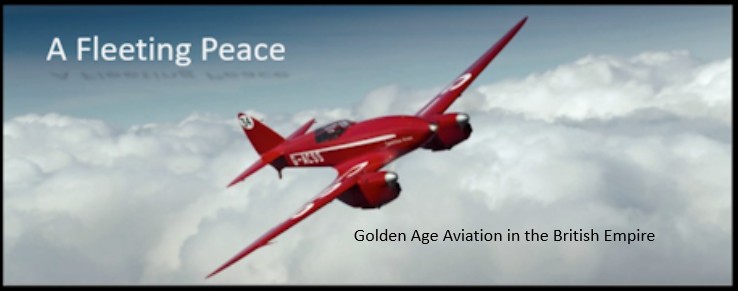


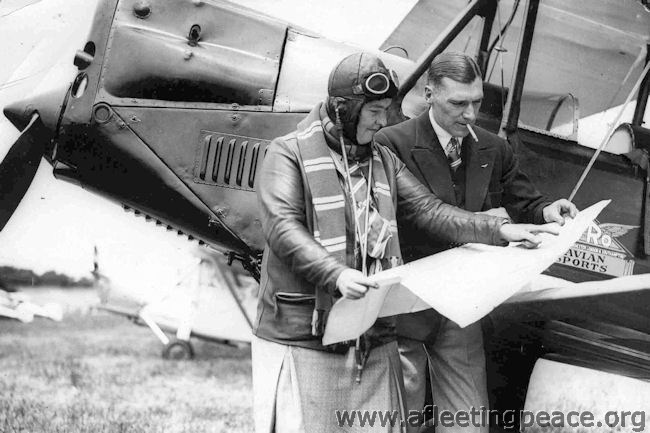


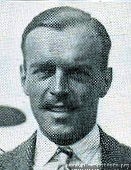 1930
1930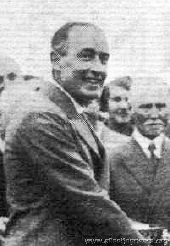
 1930
1930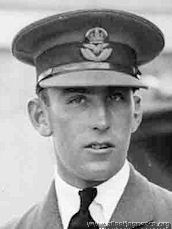 photo: 1929, aged 25
photo: 1929, aged 25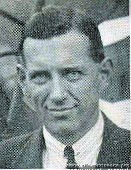 photo: 1930
photo: 1930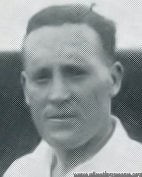 photo: 1930
photo: 1930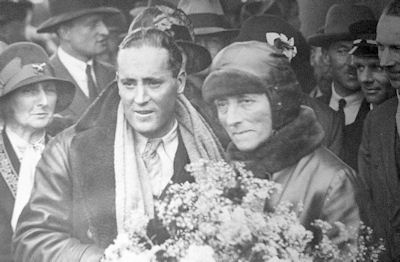
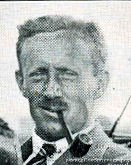
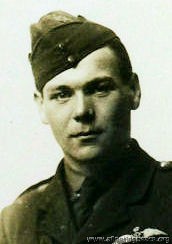 photo: 1916, aged 20
photo: 1916, aged 20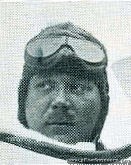 photo: 1930, aged 34. Same bloke, more pies.
photo: 1930, aged 34. Same bloke, more pies. photo: 1930, aged 33
photo: 1930, aged 33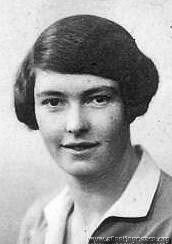 photo: 1927, aged 28
photo: 1927, aged 28 .jpg)
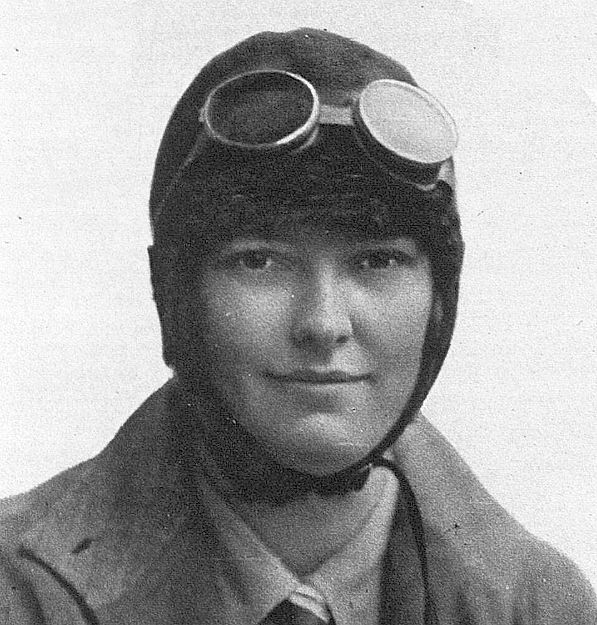 "A Well-known English Pilot" - The Sketch, 1929
"A Well-known English Pilot" - The Sketch, 1929.jpg)
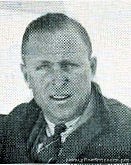
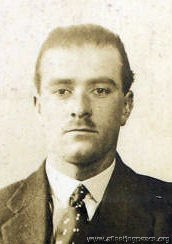
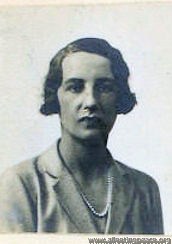
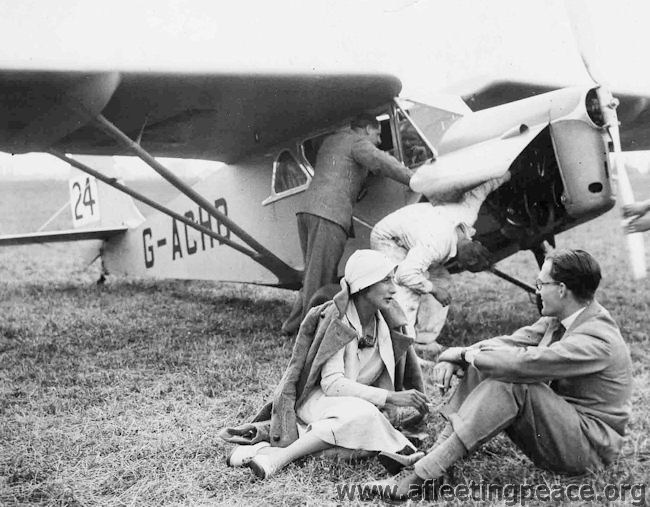 King's Cup 1933
King's Cup 1933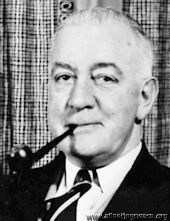 in 1961
in 1961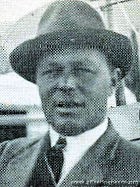
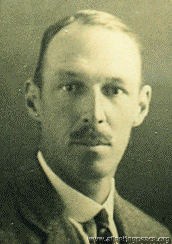 photo: 1927, aged 35
photo: 1927, aged 35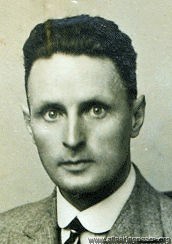
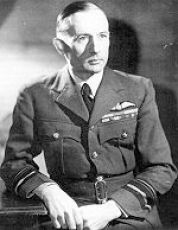
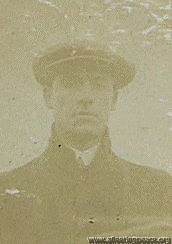 1911, aged 29
1911, aged 29 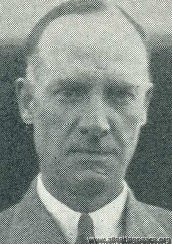 1936, aged 54
1936, aged 54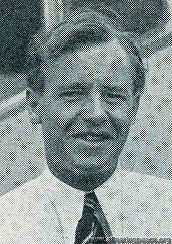 1936
1936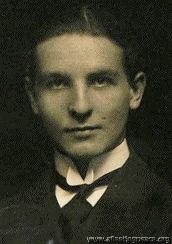
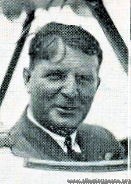
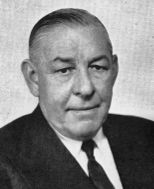 c. 1955
c. 1955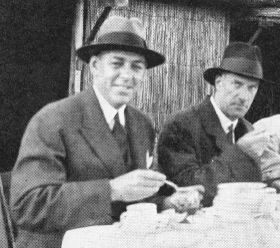
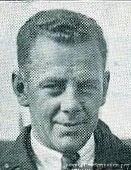 1930
1930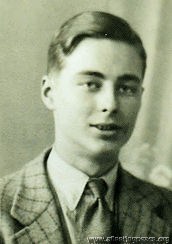 1932, aged 17
1932, aged 17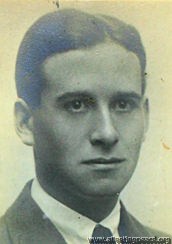
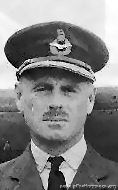
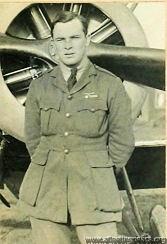
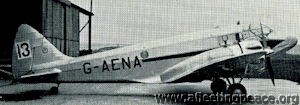
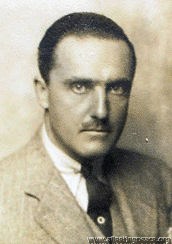 1929, aged 47
1929, aged 47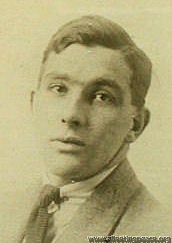 1918, when a 2nd Liet, aged 19
1918, when a 2nd Liet, aged 19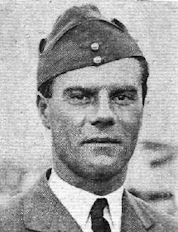
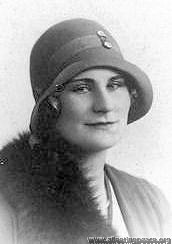
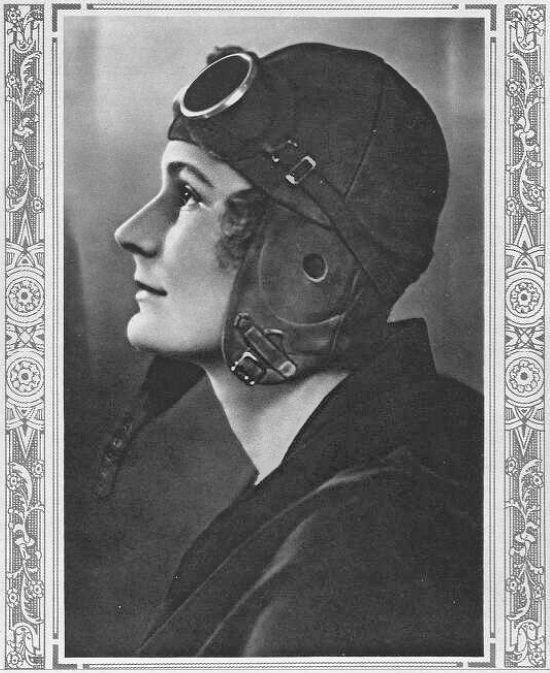
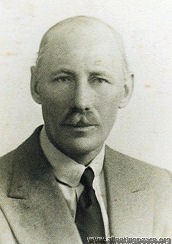 1929, aged 54
1929, aged 54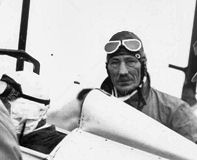
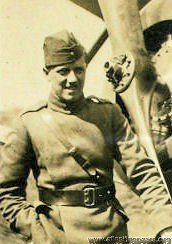 1917, when a 2nd Lieut in the RFC, aged 20
1917, when a 2nd Lieut in the RFC, aged 20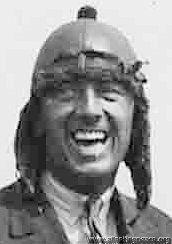 1928, aged 31
1928, aged 31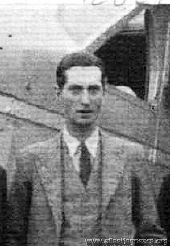
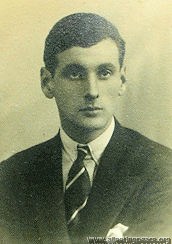 1929, aged 27
1929, aged 27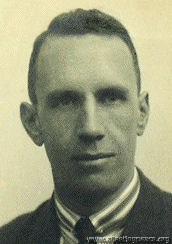 1926, aged 38
1926, aged 38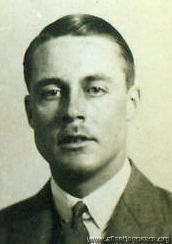 1927, aged 23
1927, aged 23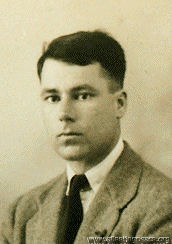 1930, aged 27
1930, aged 27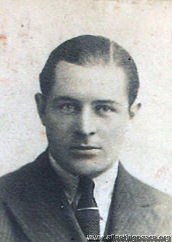 photo: 1928, aged 29
photo: 1928, aged 29
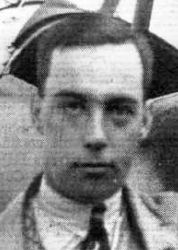

 "To the beloved and wonderful memory of Haliburton Hume Leech".
"To the beloved and wonderful memory of Haliburton Hume Leech".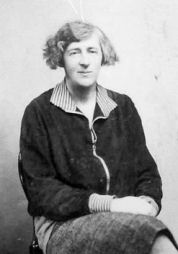
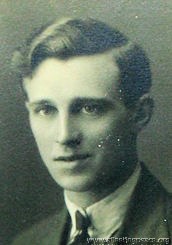
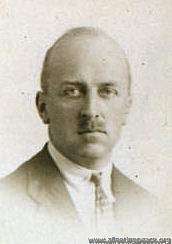 1929, aged 38
1929, aged 38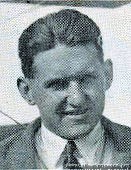 1930, aged 24
1930, aged 24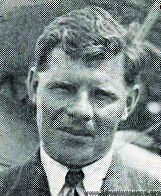 1930, aged 27
1930, aged 27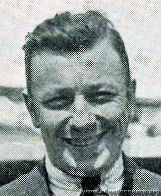 1930
1930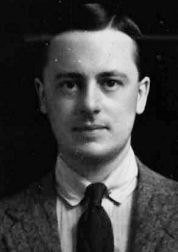
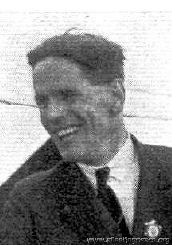 1937, aged 30
1937, aged 30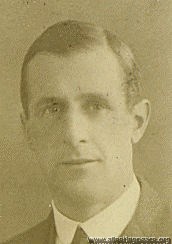 1928, aged 38
1928, aged 38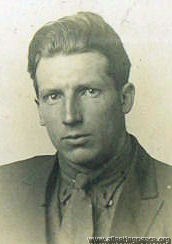 1926
1926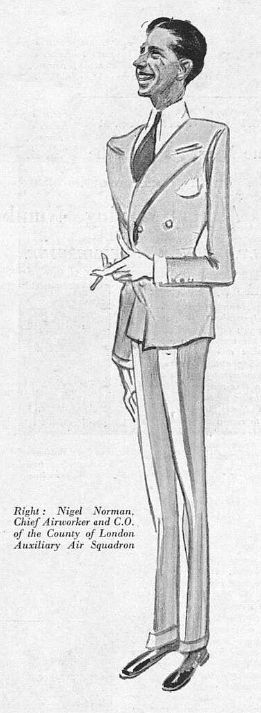 The Bystander Special Aviation Edition, 1933
The Bystander Special Aviation Edition, 1933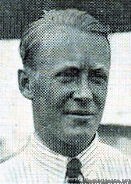 1930
1930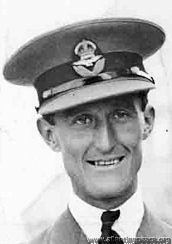
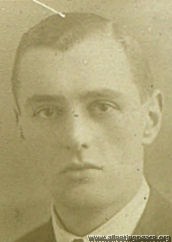 1929, aged 27
1929, aged 27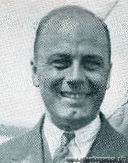 1930, aged 32
1930, aged 32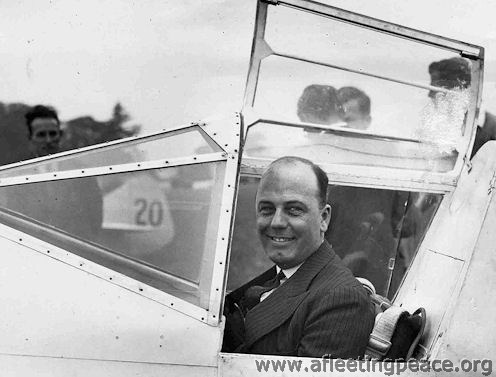 King's Cup 1934; sans trilby, for once
King's Cup 1934; sans trilby, for once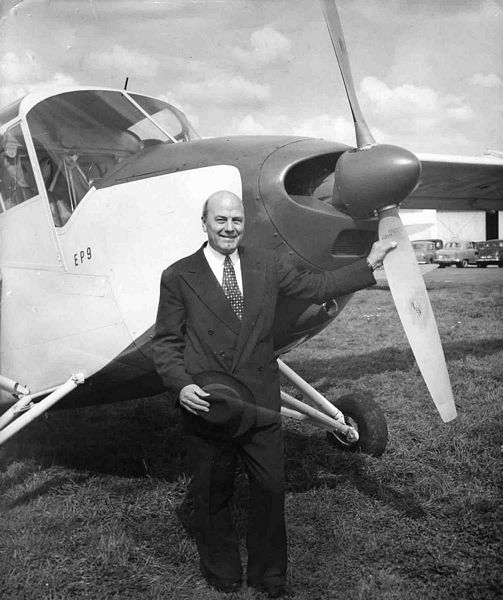 In 1956, with the EP.9 'Prospector'. And trilby.
In 1956, with the EP.9 'Prospector'. And trilby.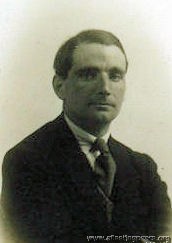 1928, aged 32
1928, aged 32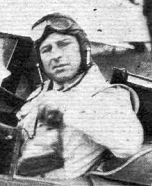
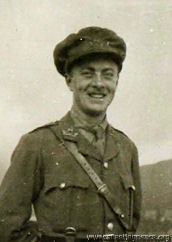 1916, when a 2nd Lieut in the 2/5th Royal Warwickshire Regiment, aged 25
1916, when a 2nd Lieut in the 2/5th Royal Warwickshire Regiment, aged 25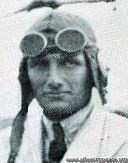
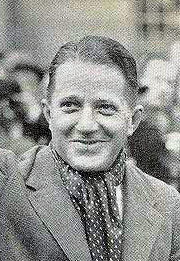 1936
1936![Kings Cup 1938 Tommy Rose [0122-0170]](/images/gallery/air%20races/preview/333s333/Kings%20Cup%201938%20Tommy%20Rose%20%5B0122-0170%5D.jpg)
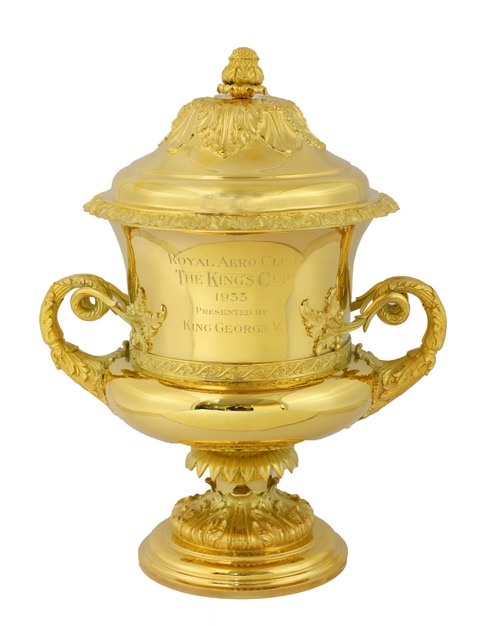
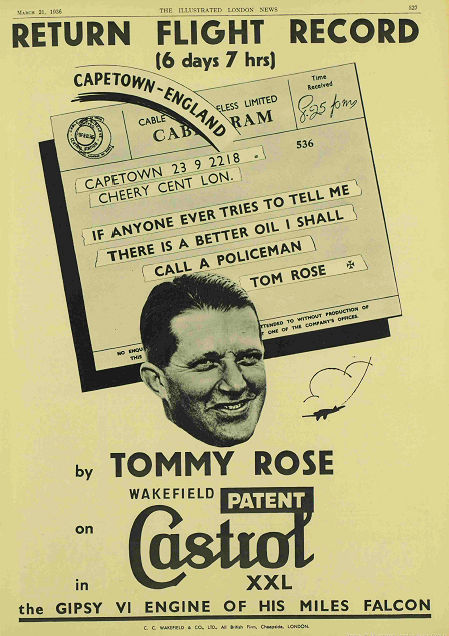
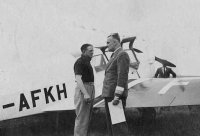
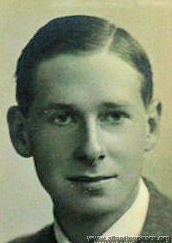
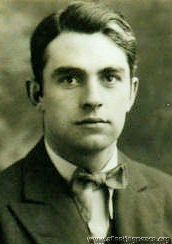
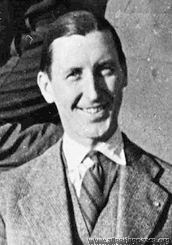
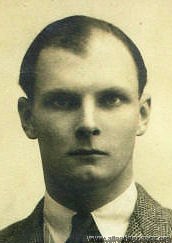 1929, when an Army officer (11th Hussars), aged 25
1929, when an Army officer (11th Hussars), aged 25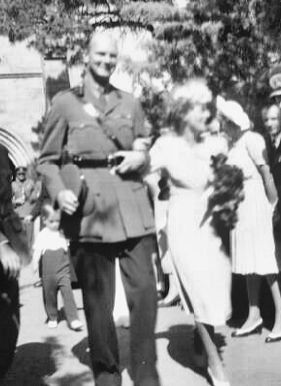
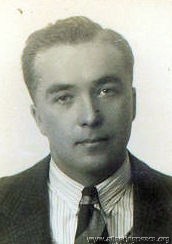 1930, aged 24
1930, aged 24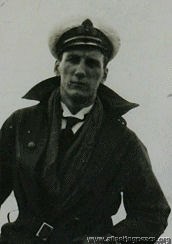 1916, when a Sub-Lieut in the RNVR
1916, when a Sub-Lieut in the RNVR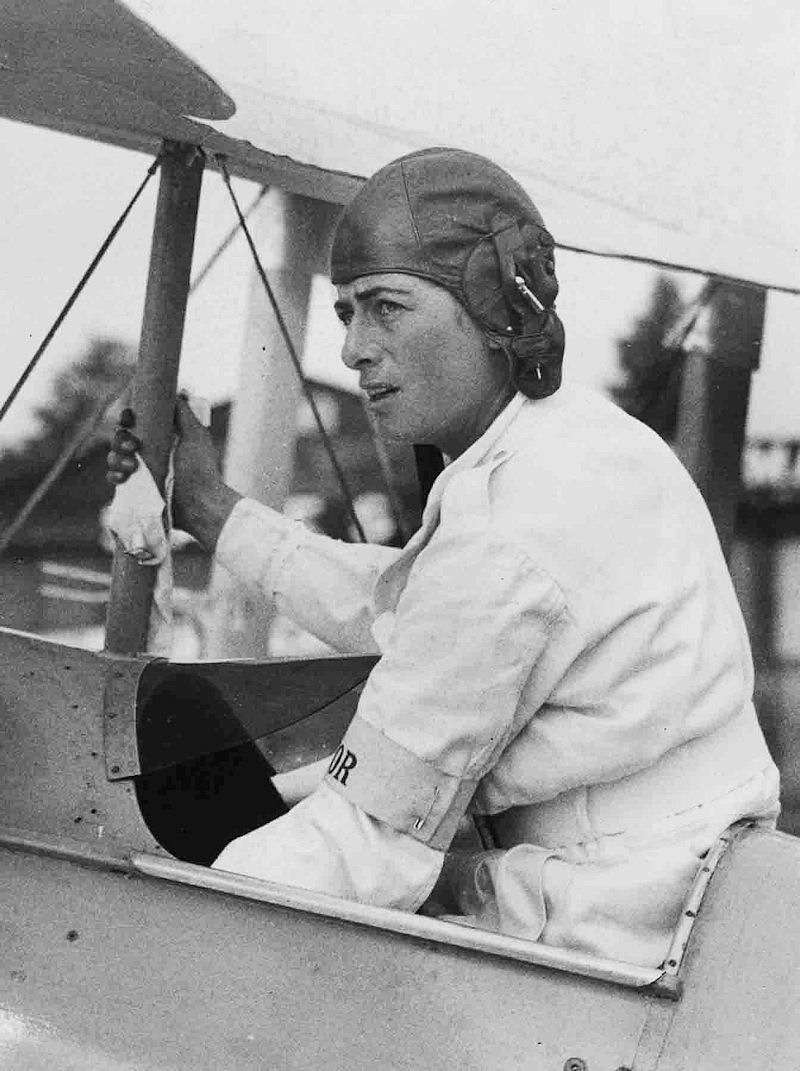
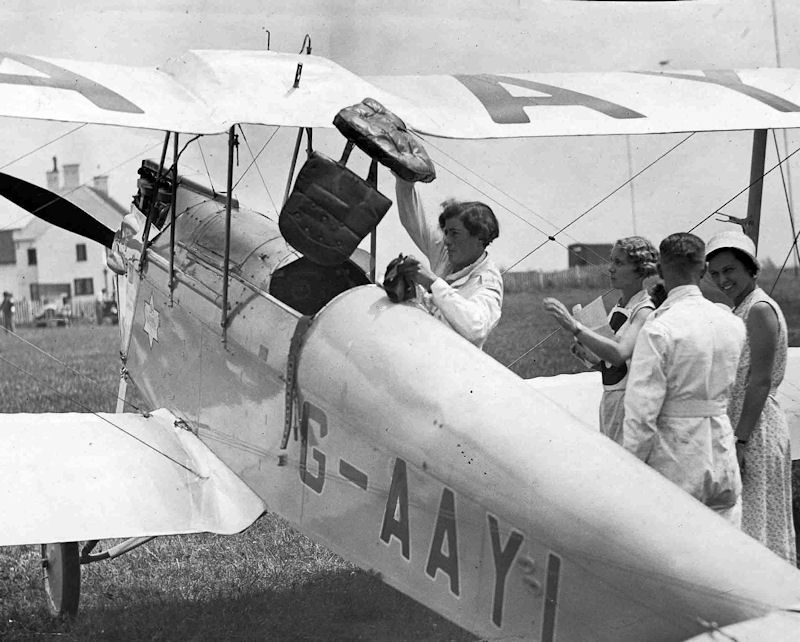
.jpg)
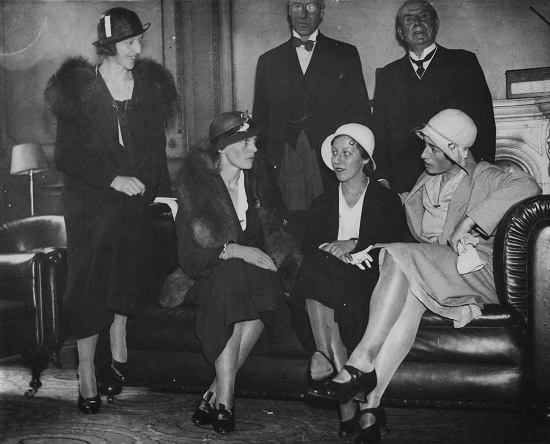
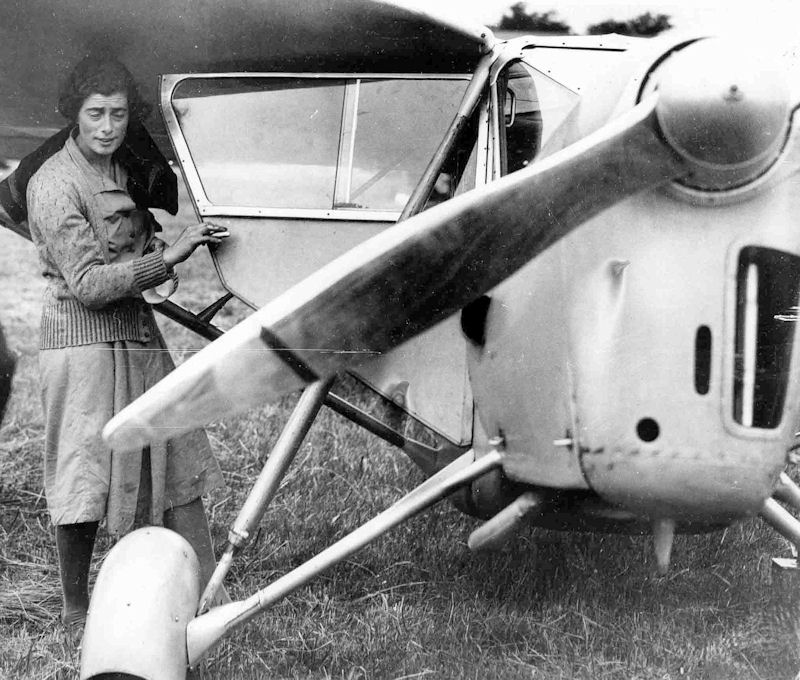
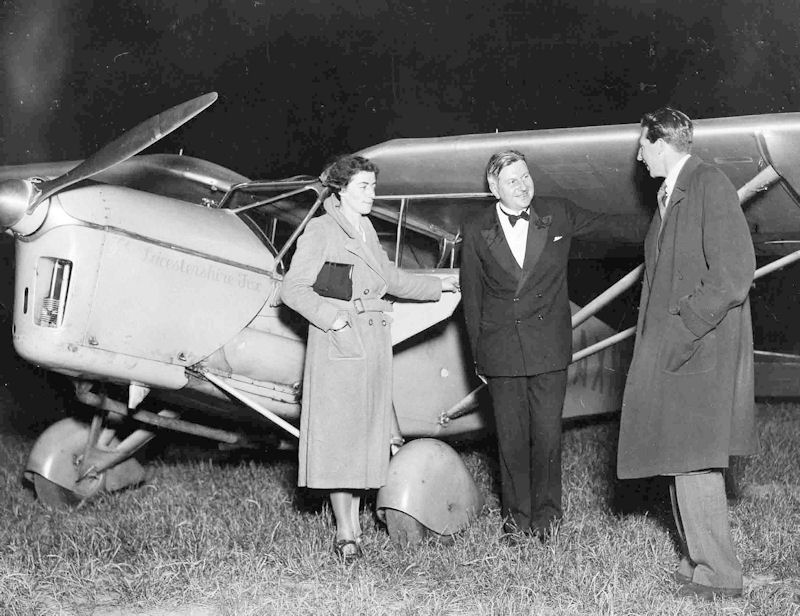
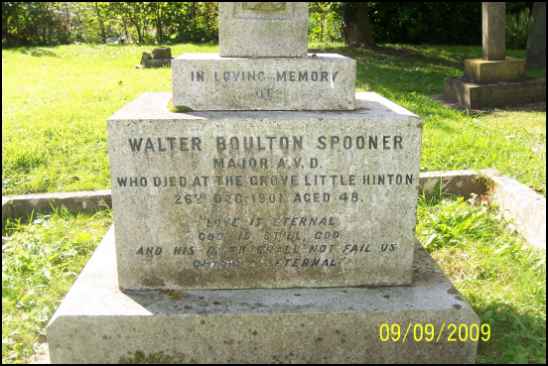
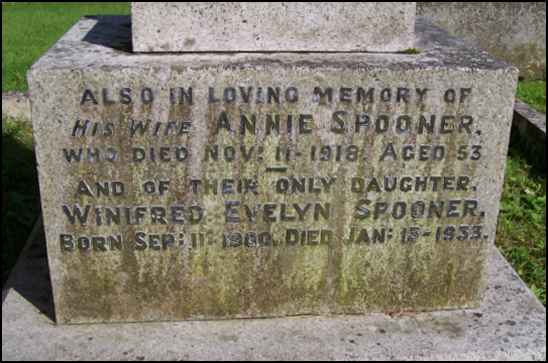
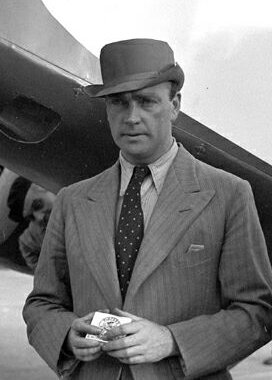 1934, aged 38
1934, aged 38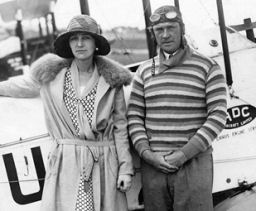
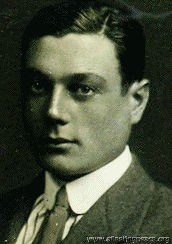 1913, when a farmer from Dorset, aged 22
1913, when a farmer from Dorset, aged 22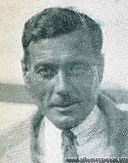 1930, aged 39
1930, aged 39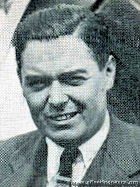 1930, aged 26
1930, aged 26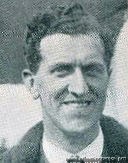 1930
1930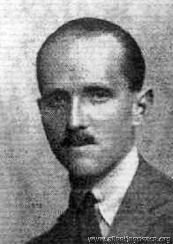
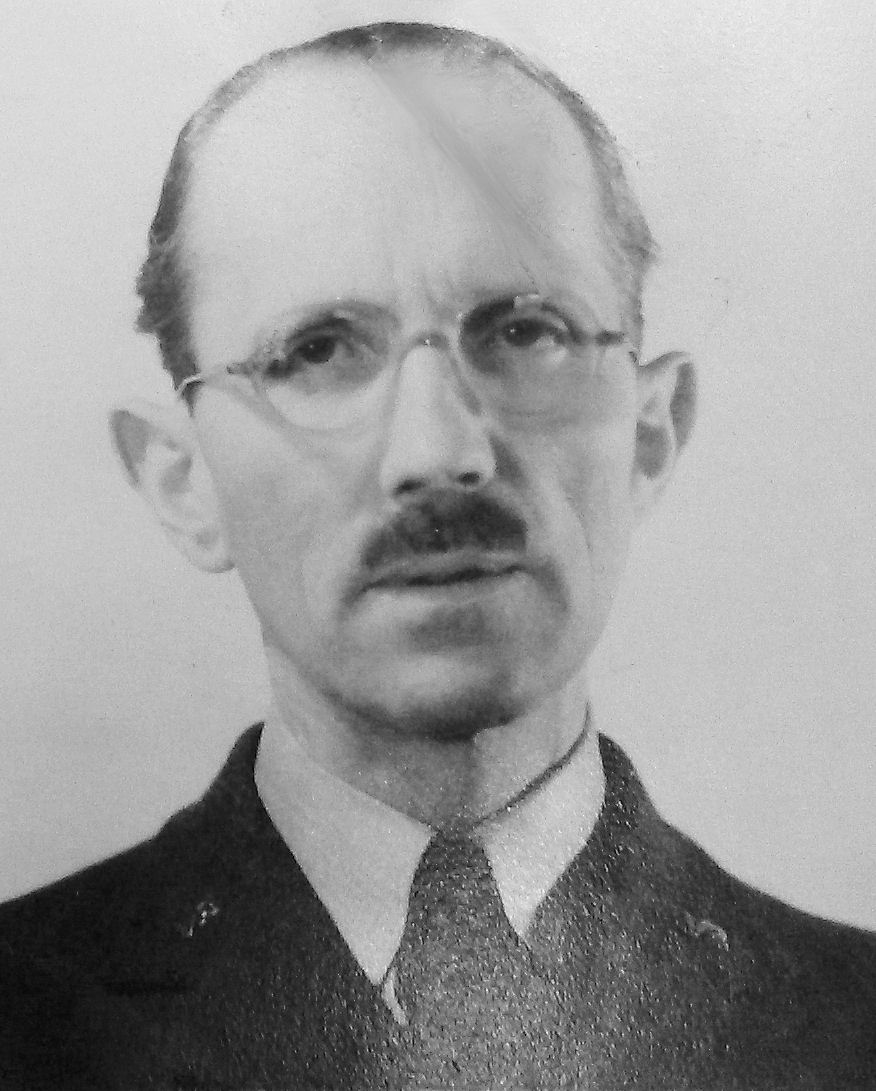 ATA, 1943
ATA, 1943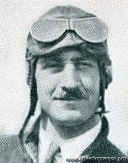 1930, aged 29
1930, aged 29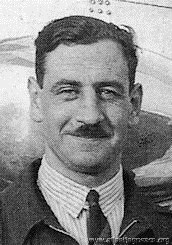 1947, aged 46
1947, aged 46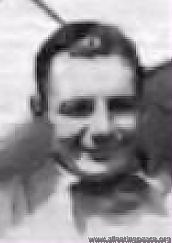 1935
1935.jpg)
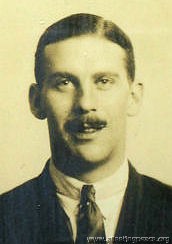
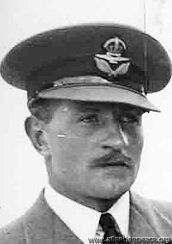 1929, aged 25
1929, aged 25
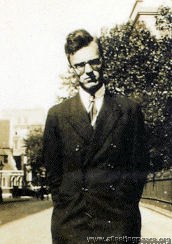
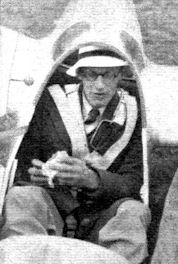
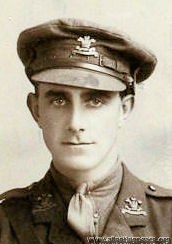 1915, when a Lieutenant in the 10th Royal Hussars, aged 30
1915, when a Lieutenant in the 10th Royal Hussars, aged 30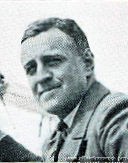 1930, aged 45
1930, aged 45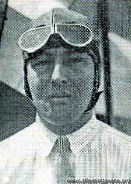 1930, aged 42
1930, aged 42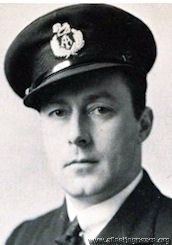
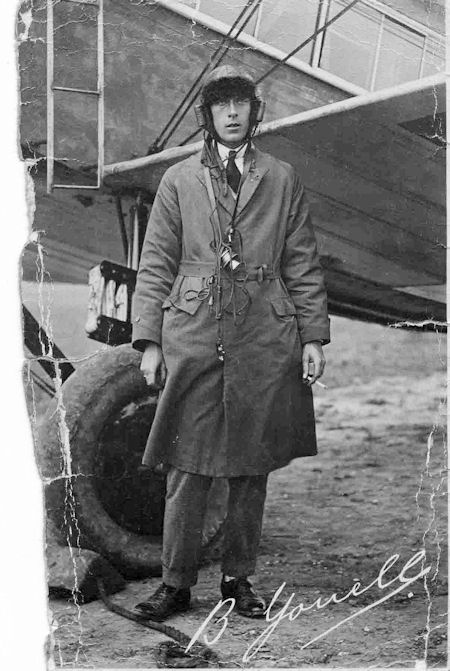
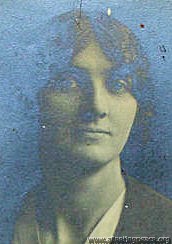 1929, aged 38
1929, aged 38